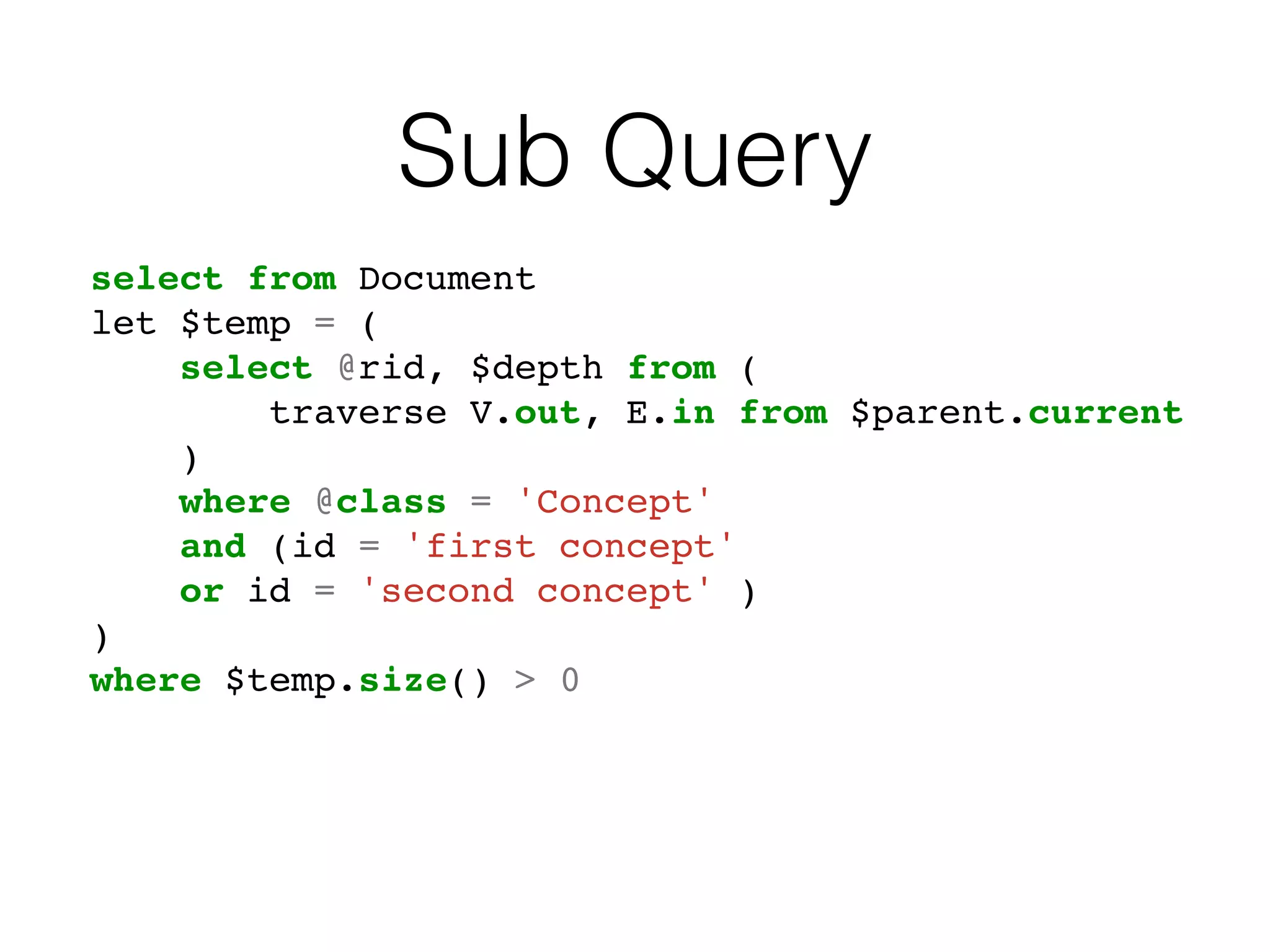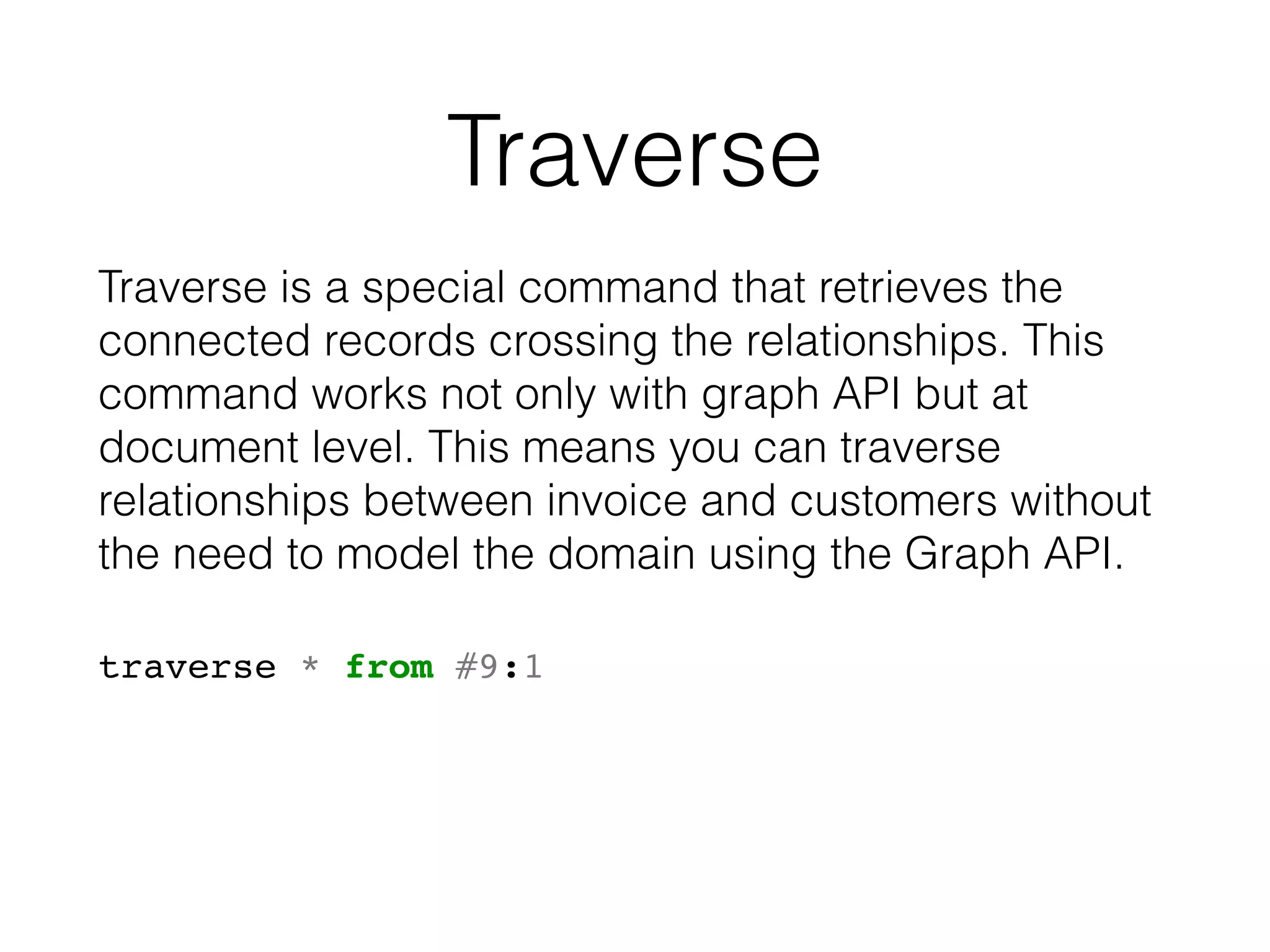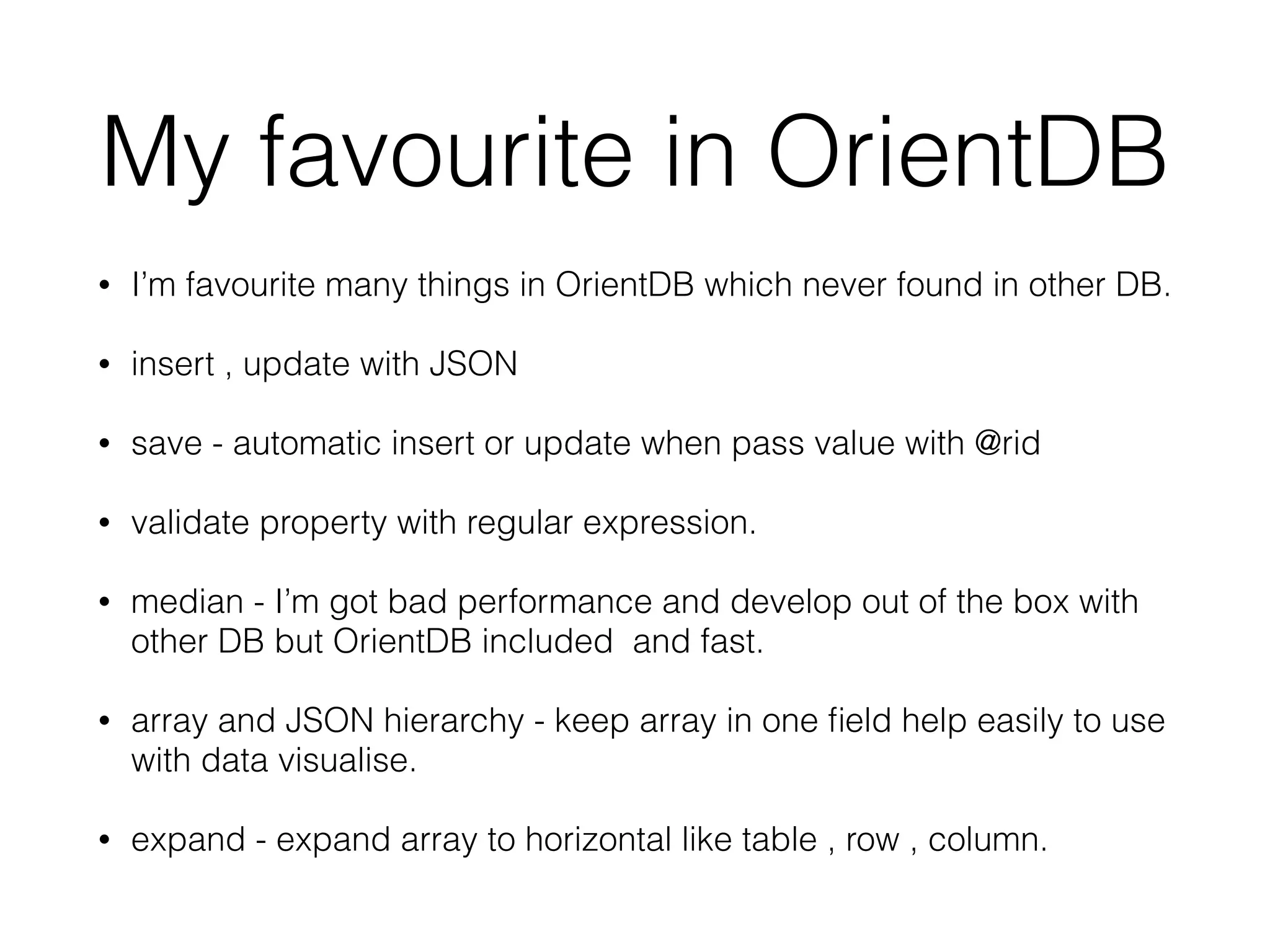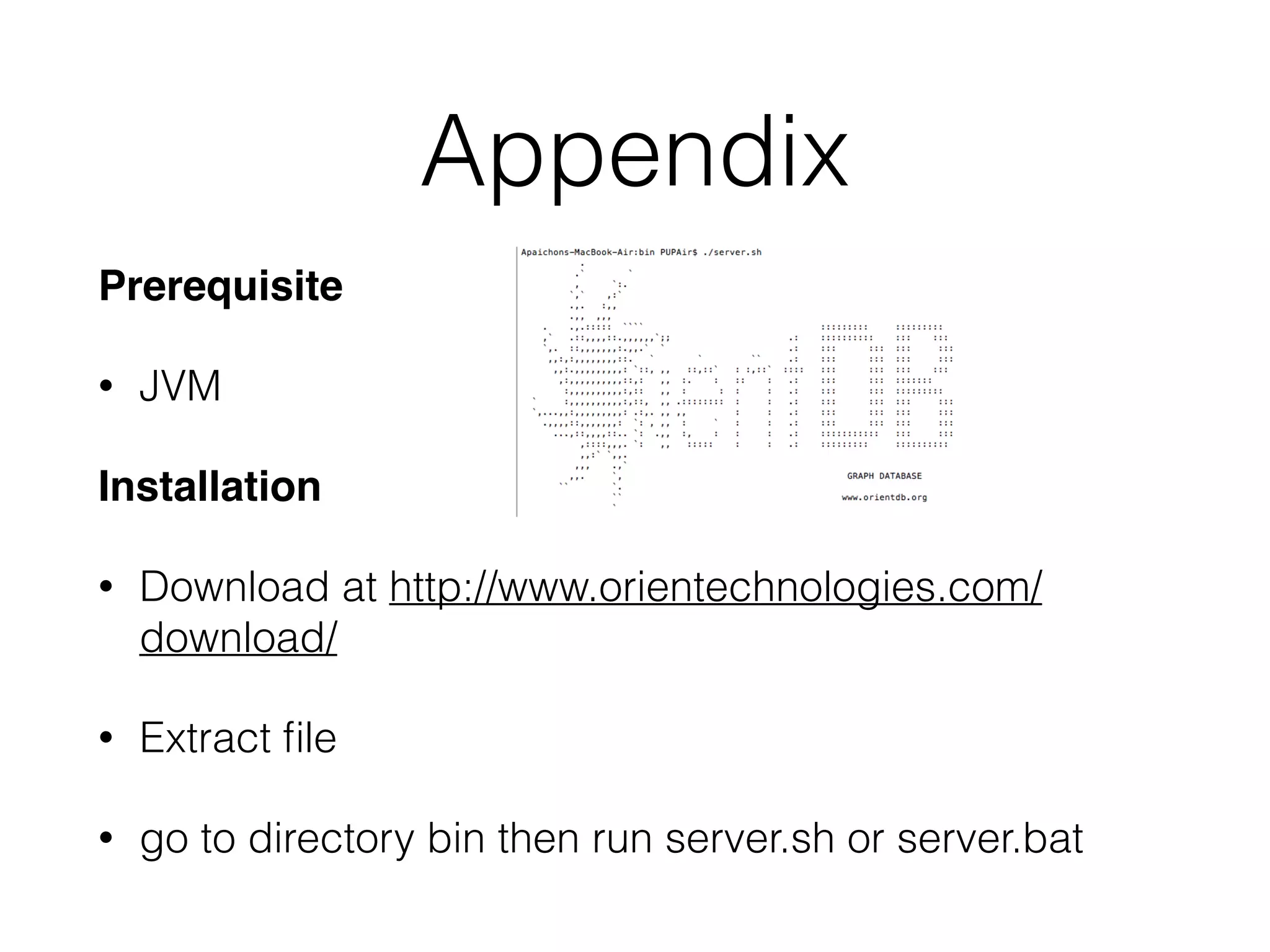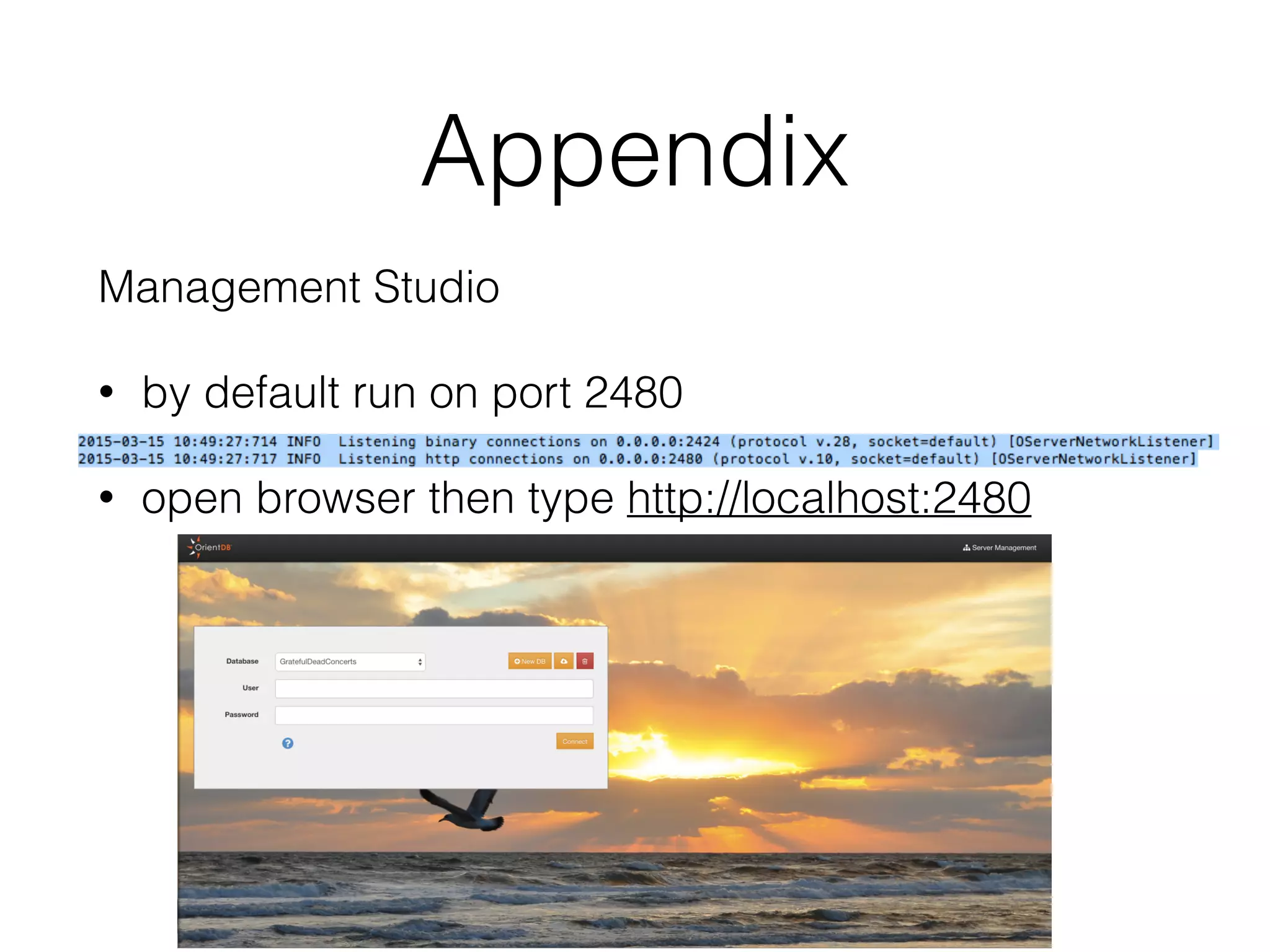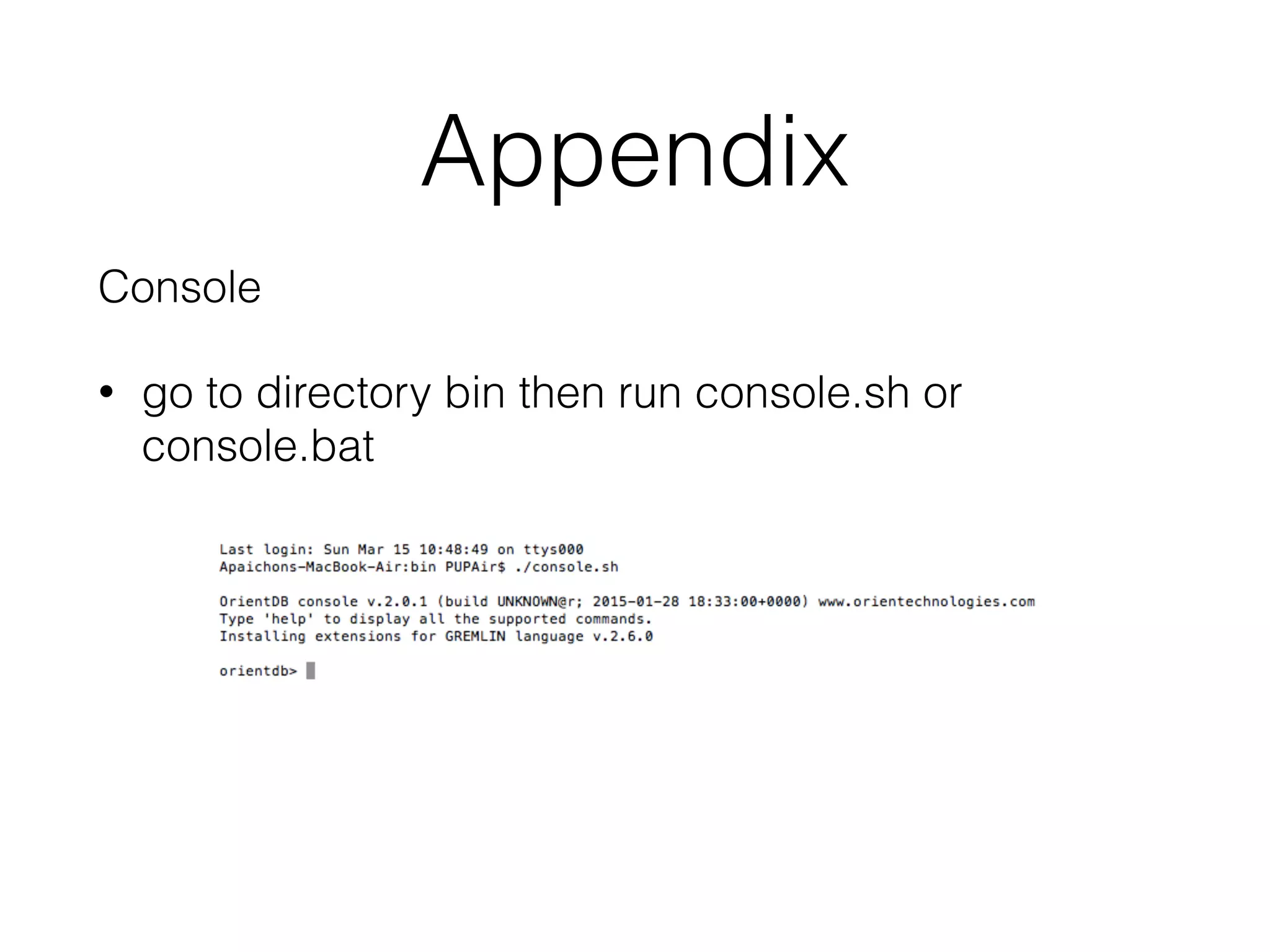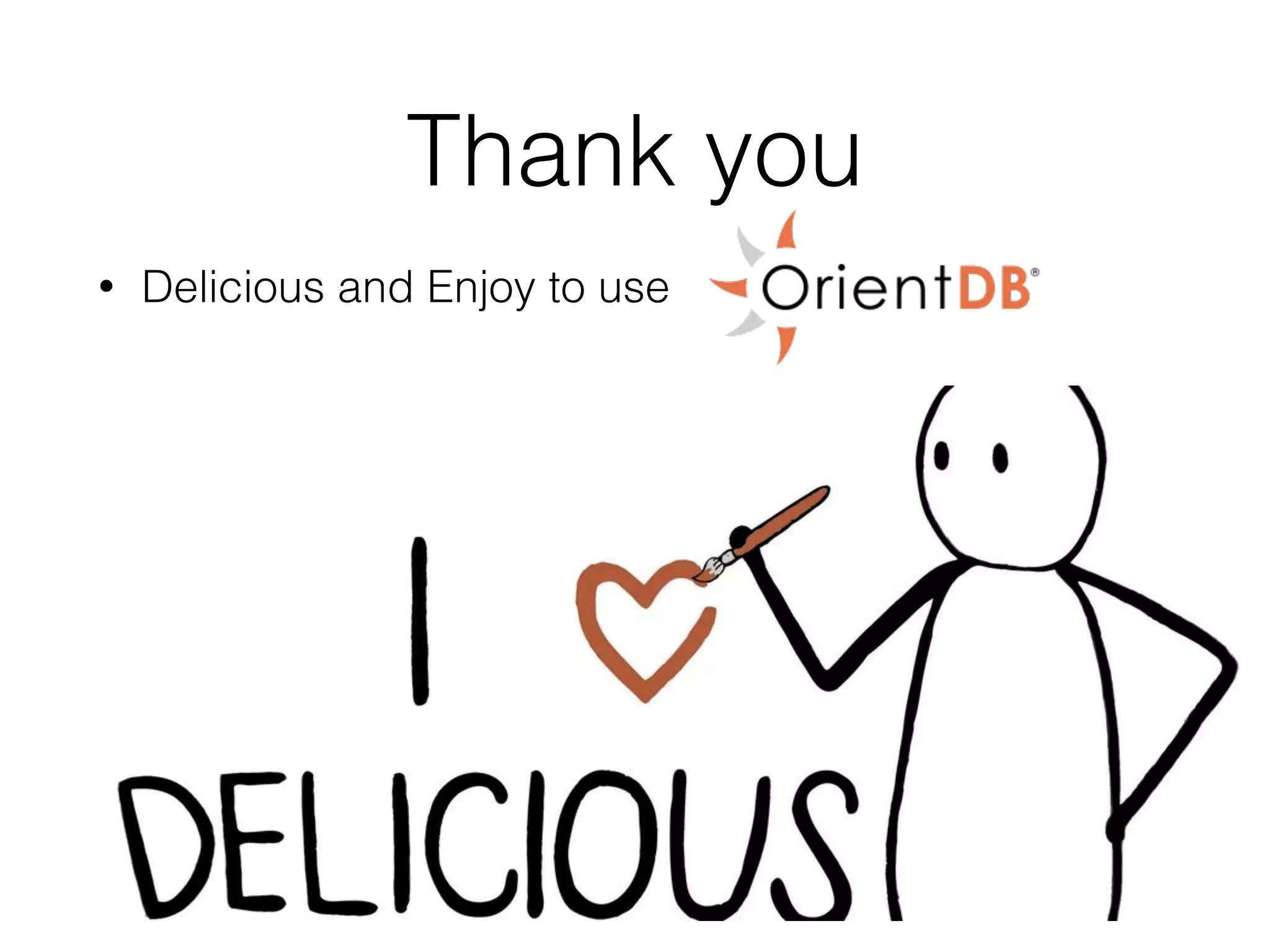The document discusses the transition from relational databases to NoSQL and specifically to graph databases using OrientDB, highlighting differences and advantages of each. It covers database structures, pros and cons of relational and NoSQL databases, and features of OrientDB, including multi-model capabilities and query support. The text also touches on trends in database usage and the potential future of database technologies.
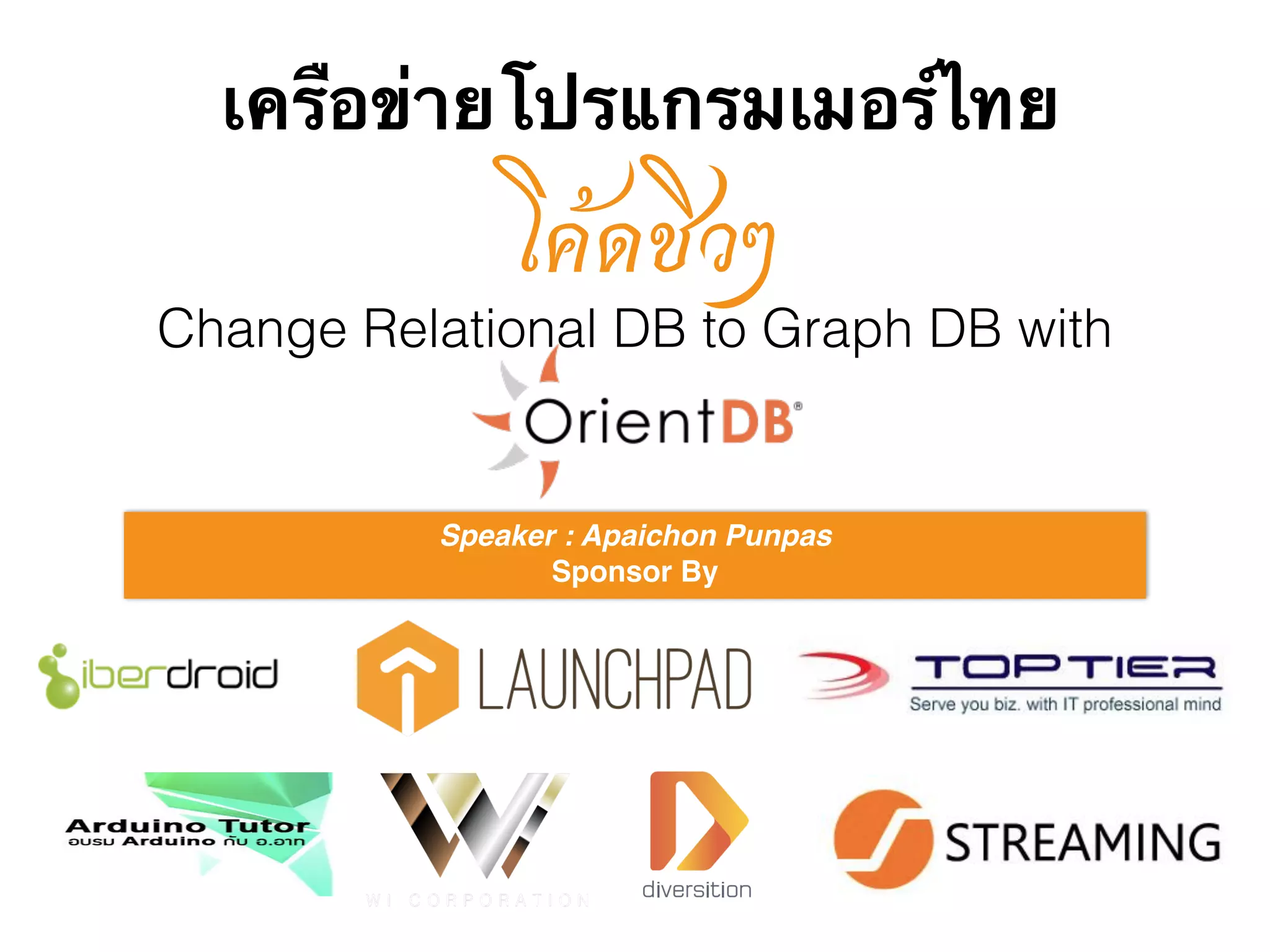
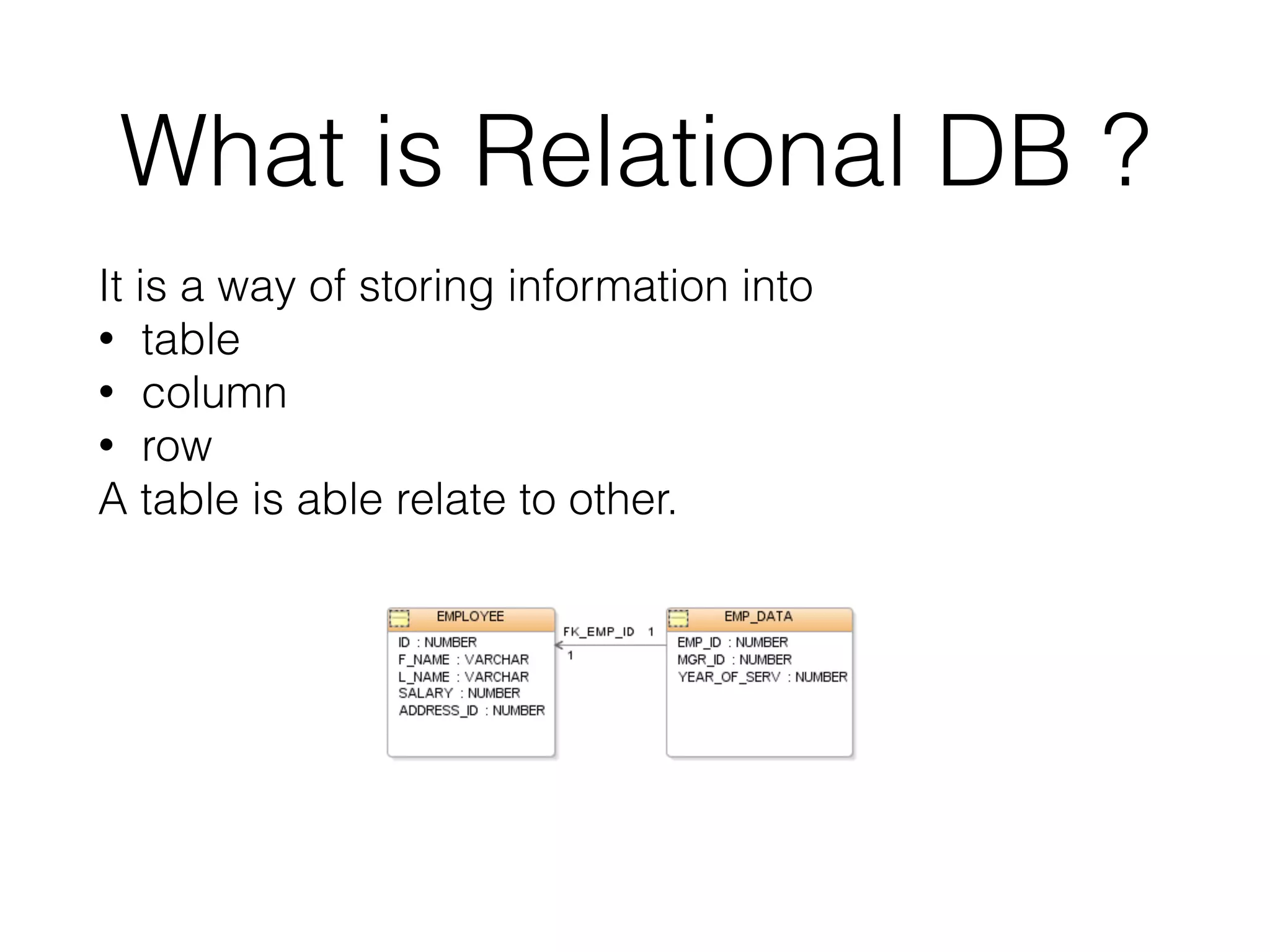
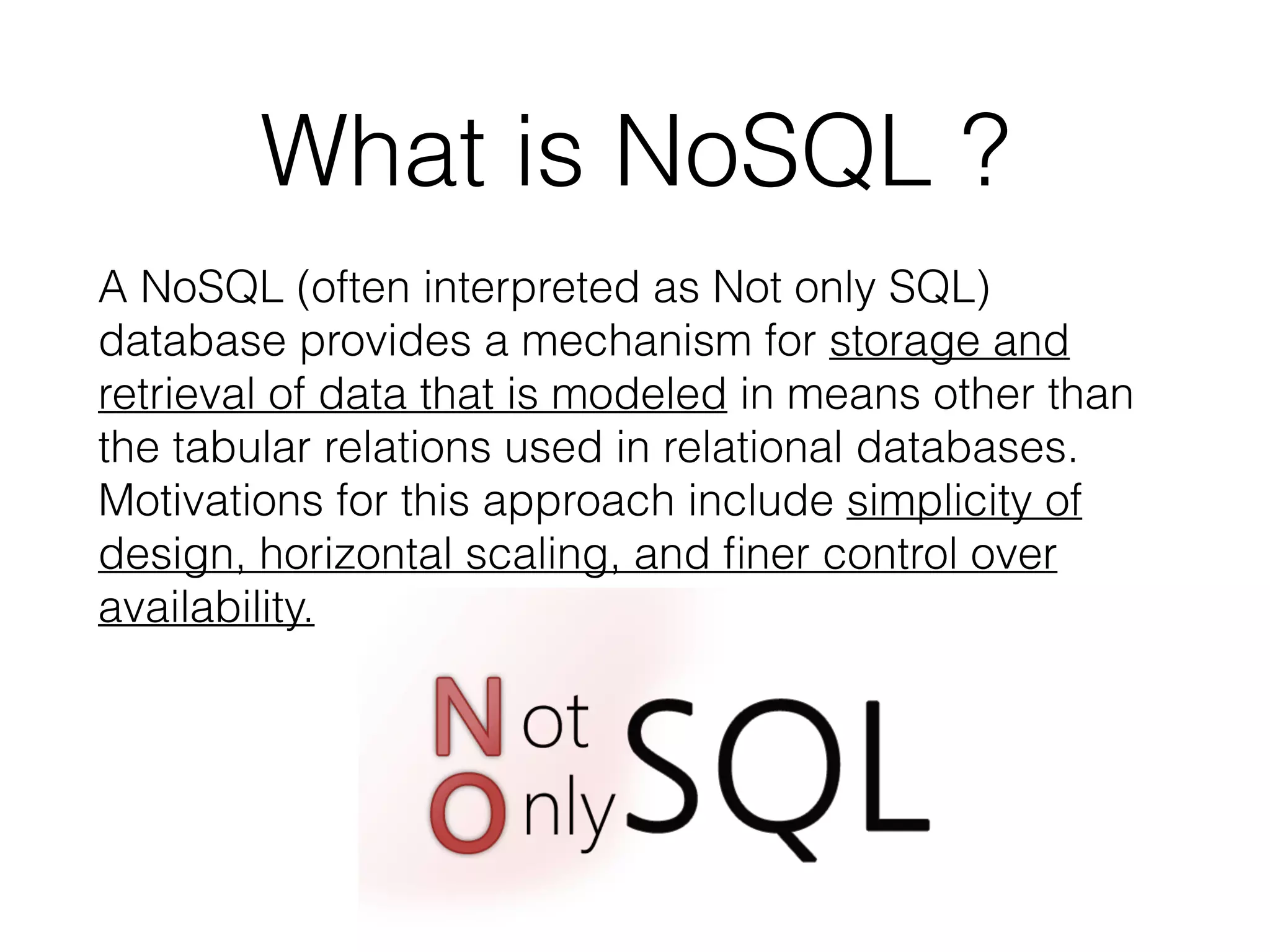
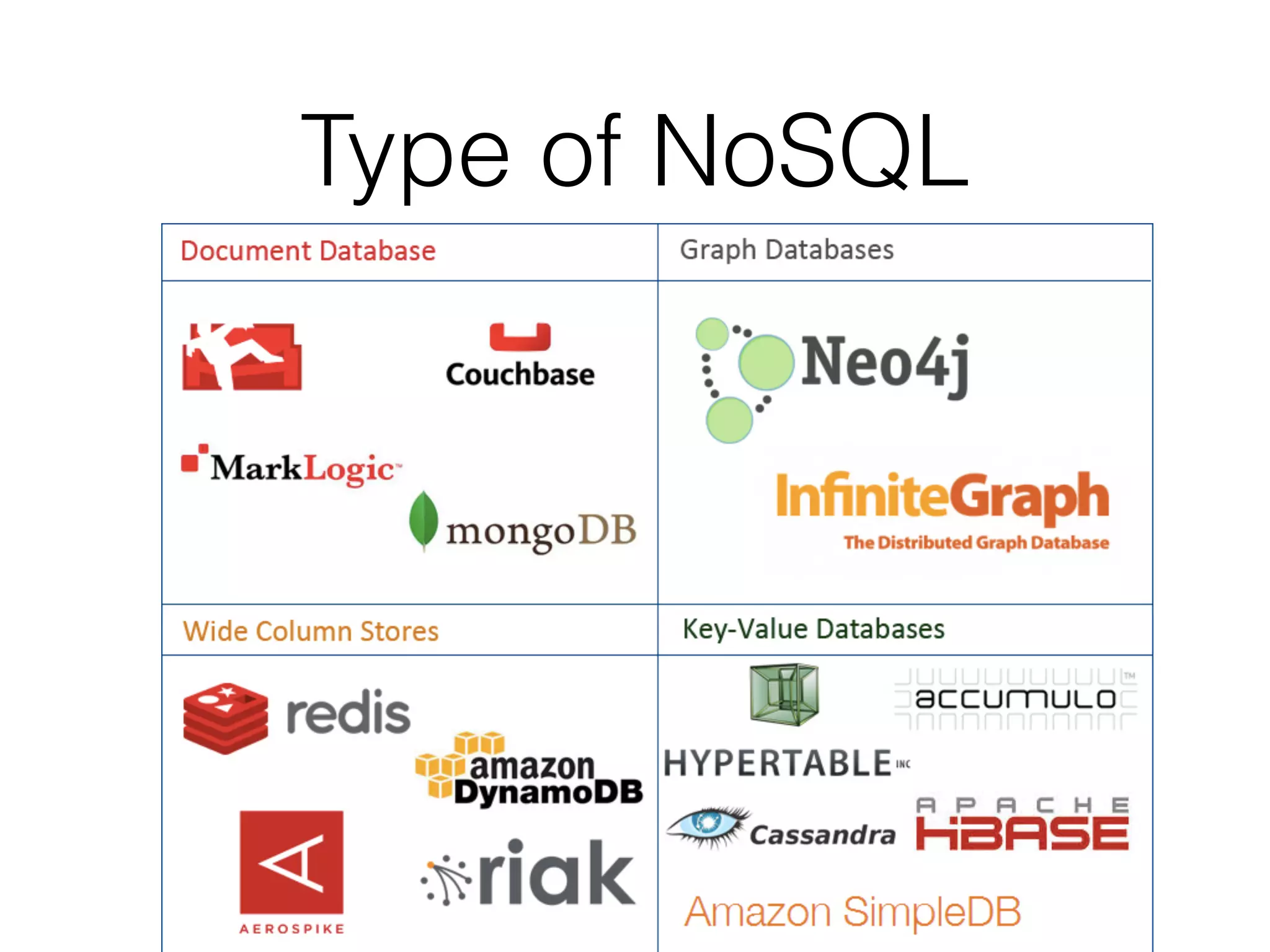
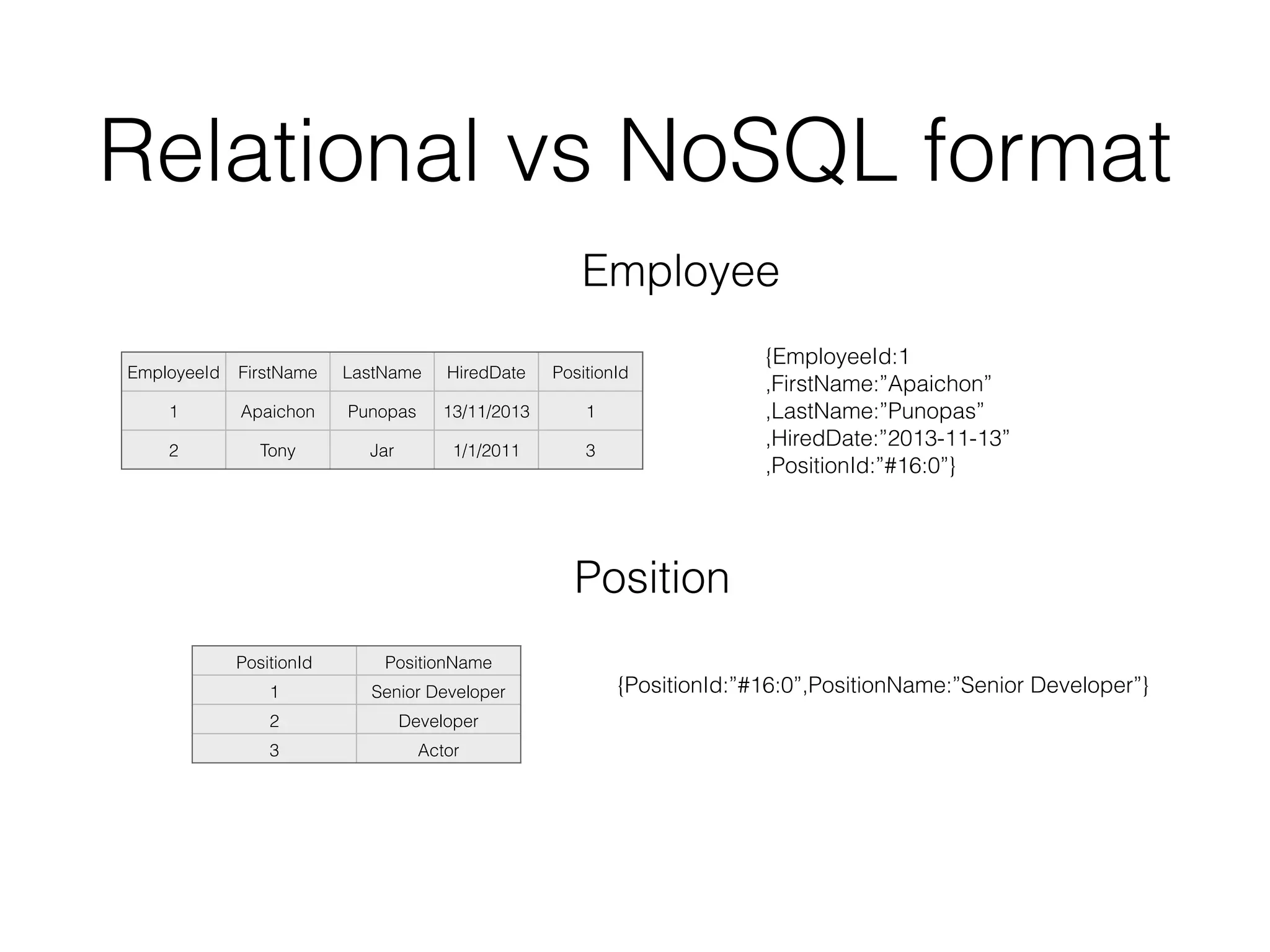
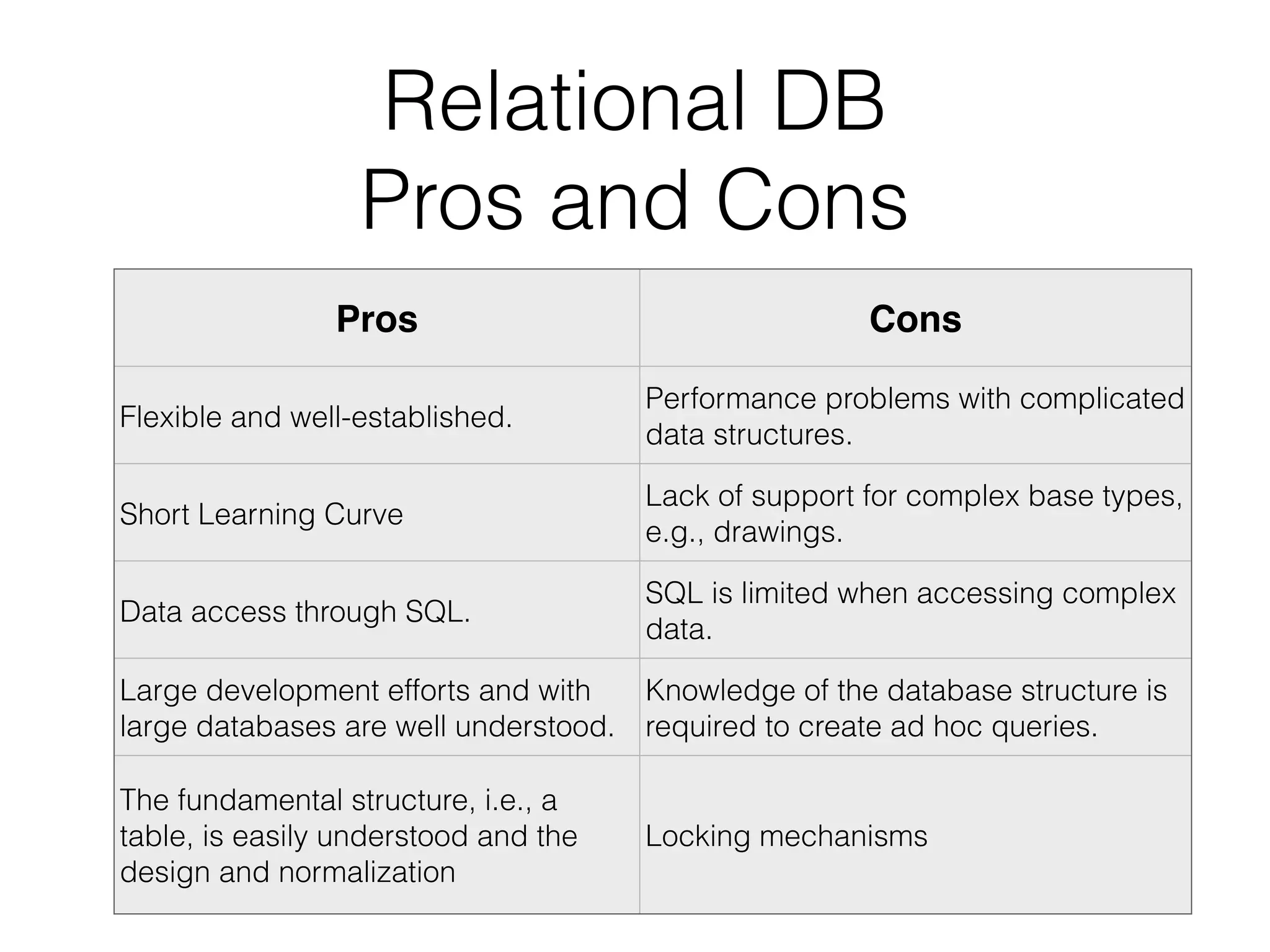
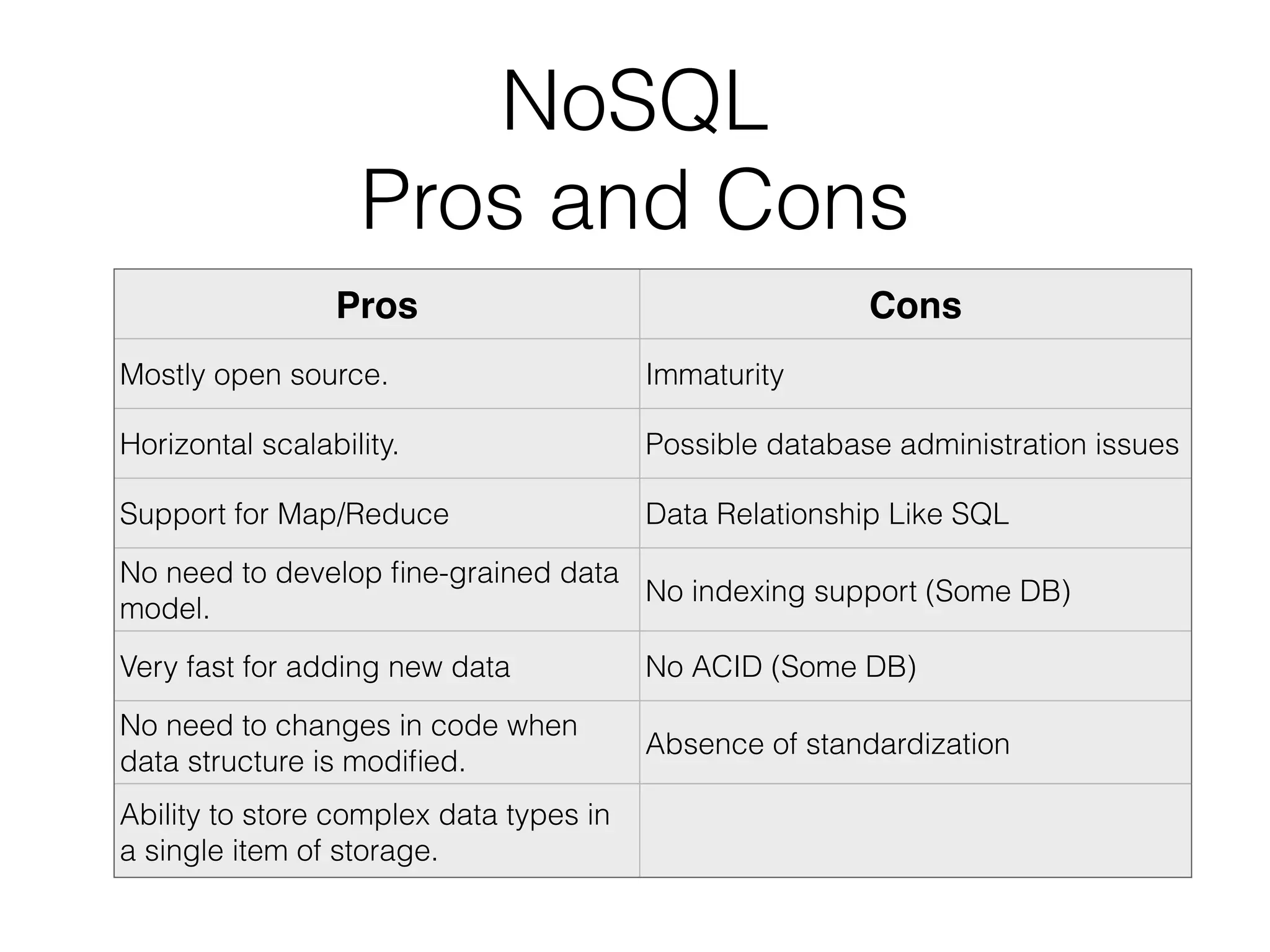

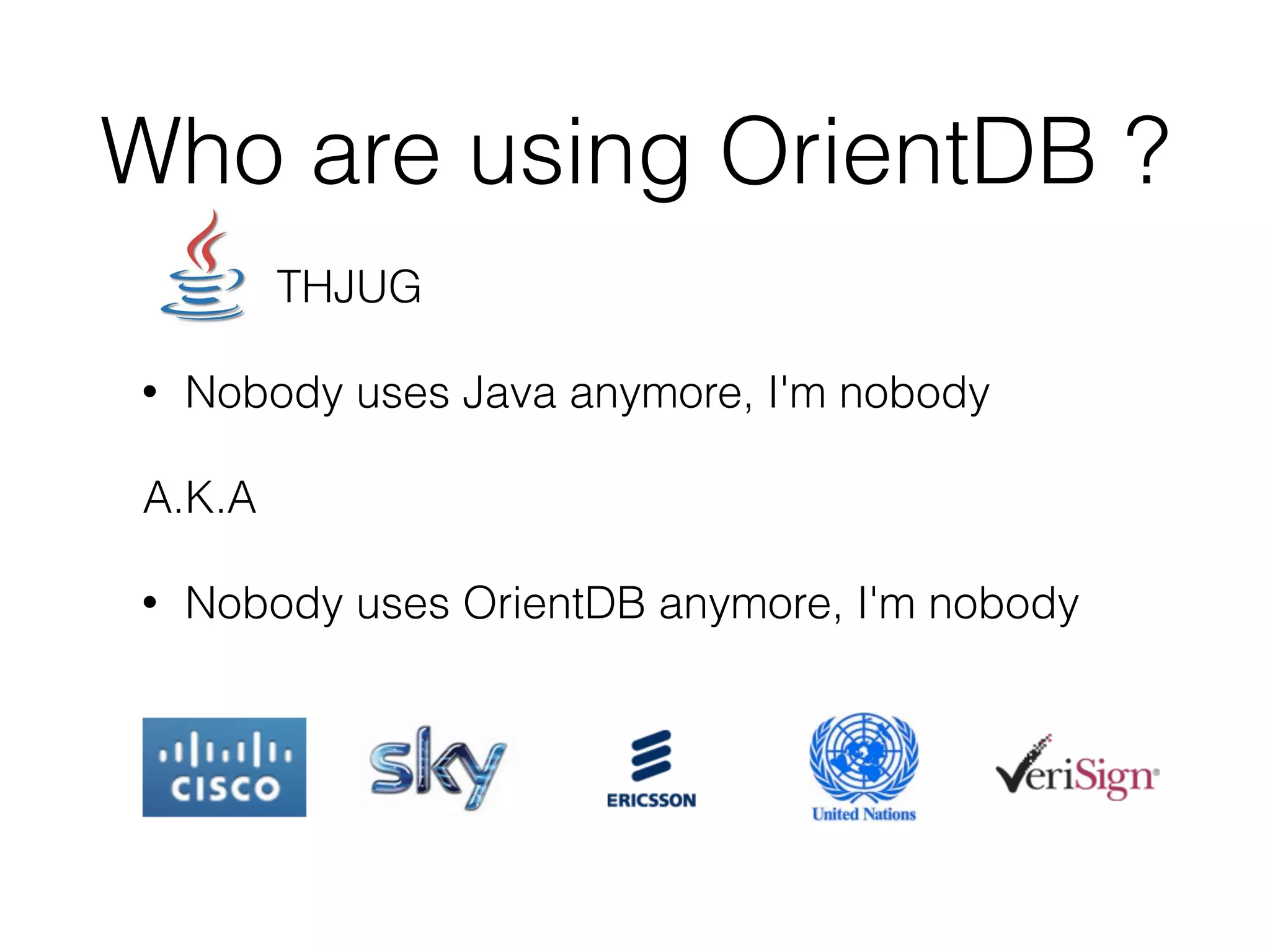
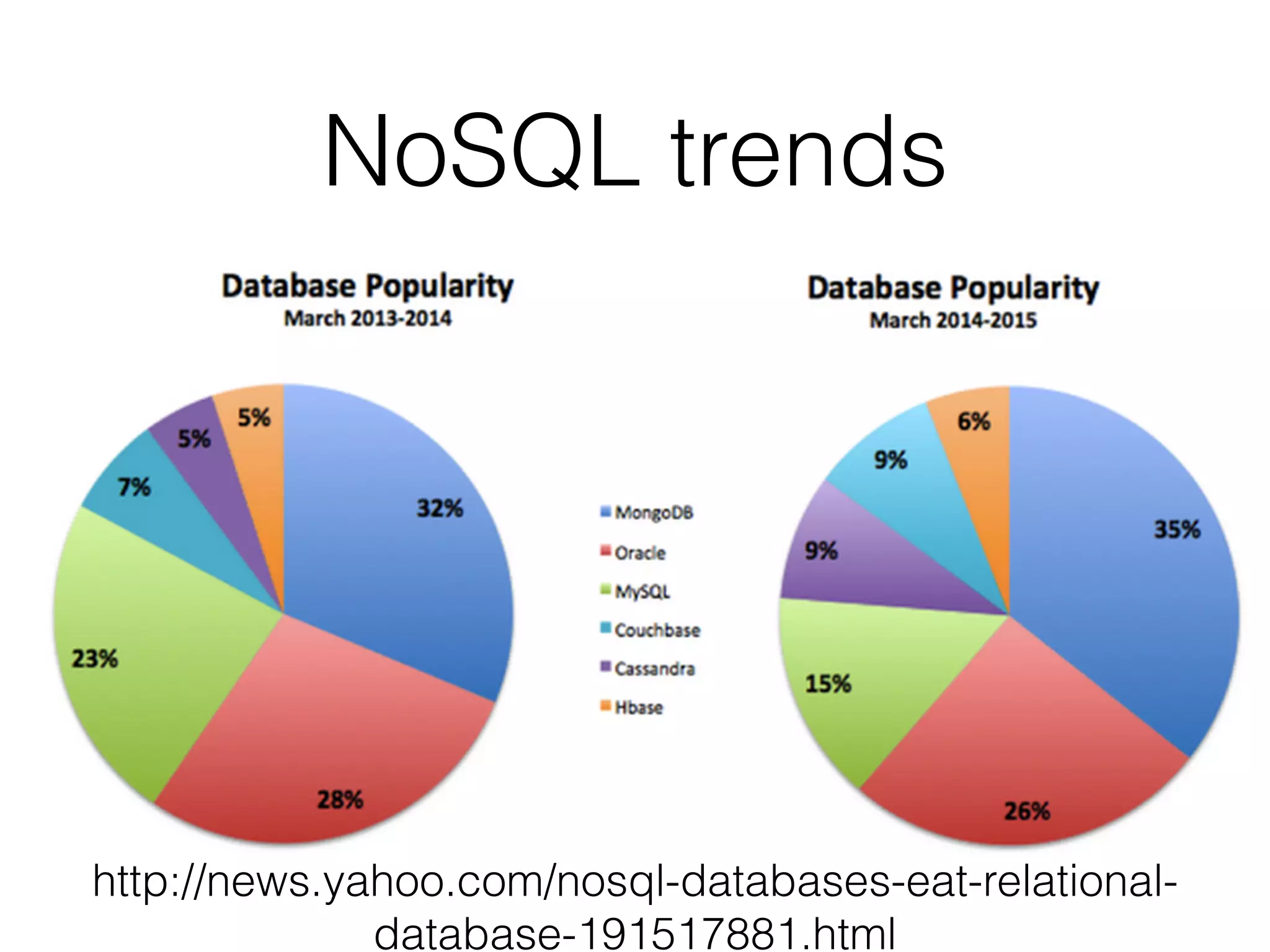
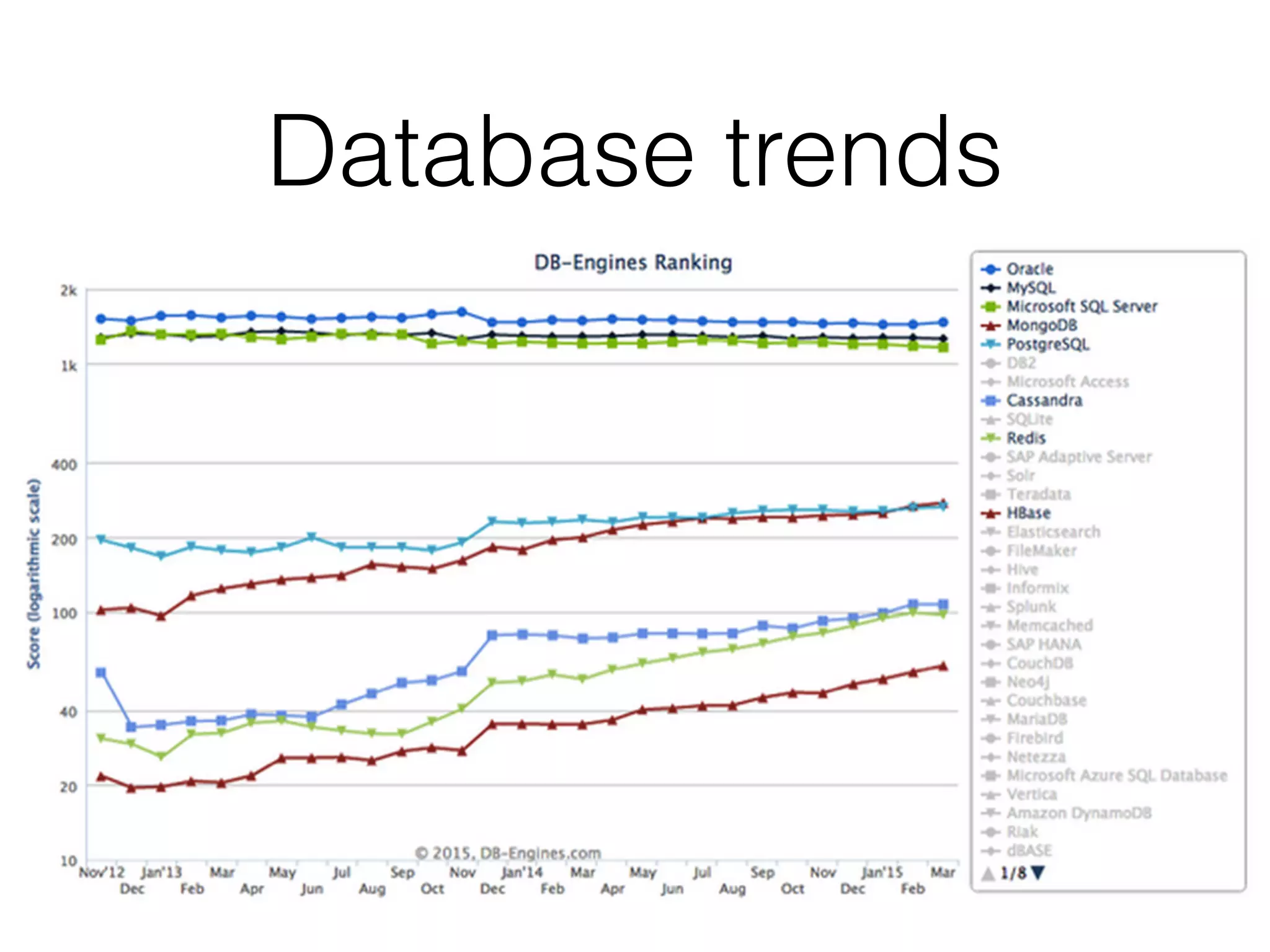
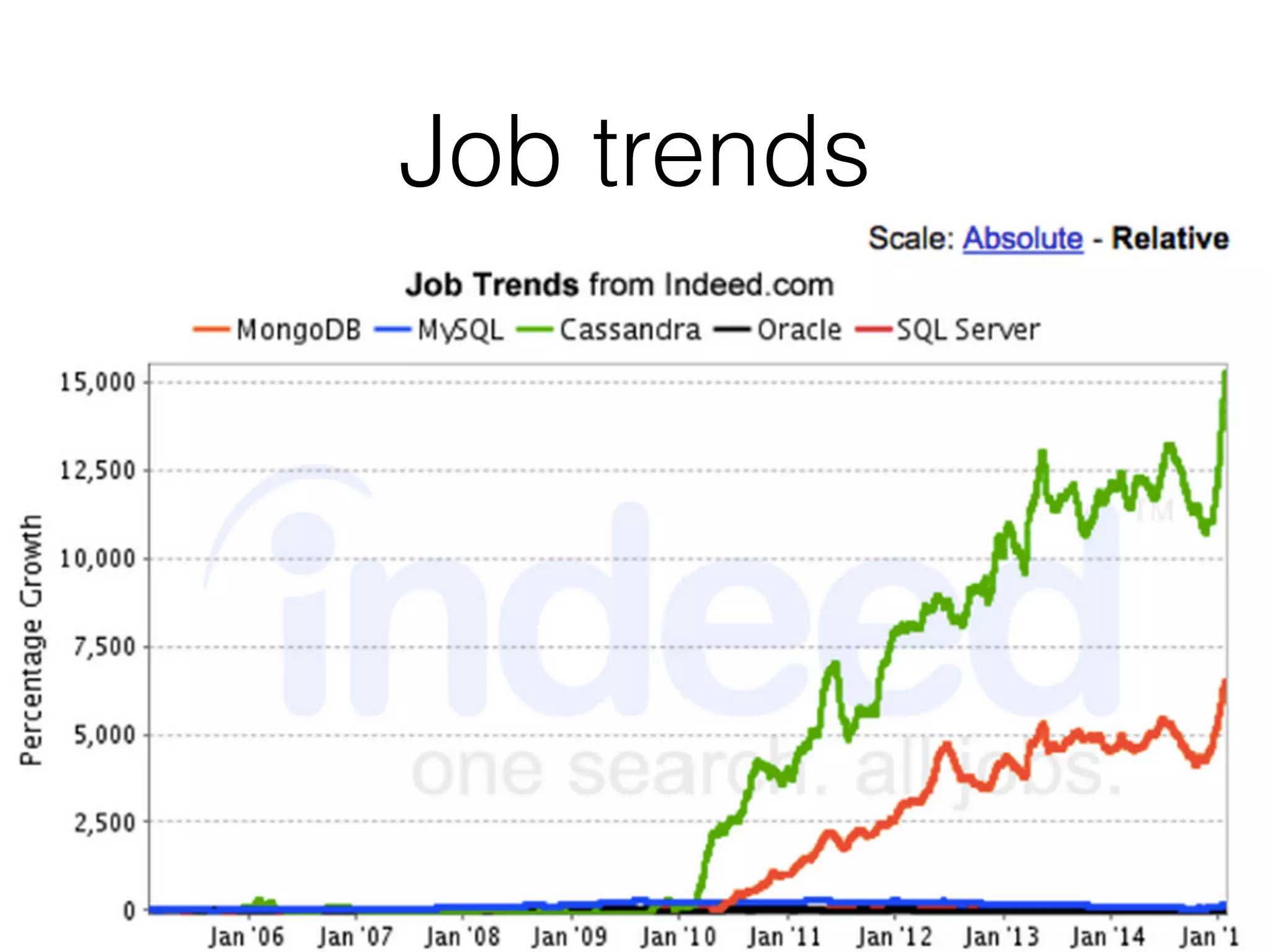
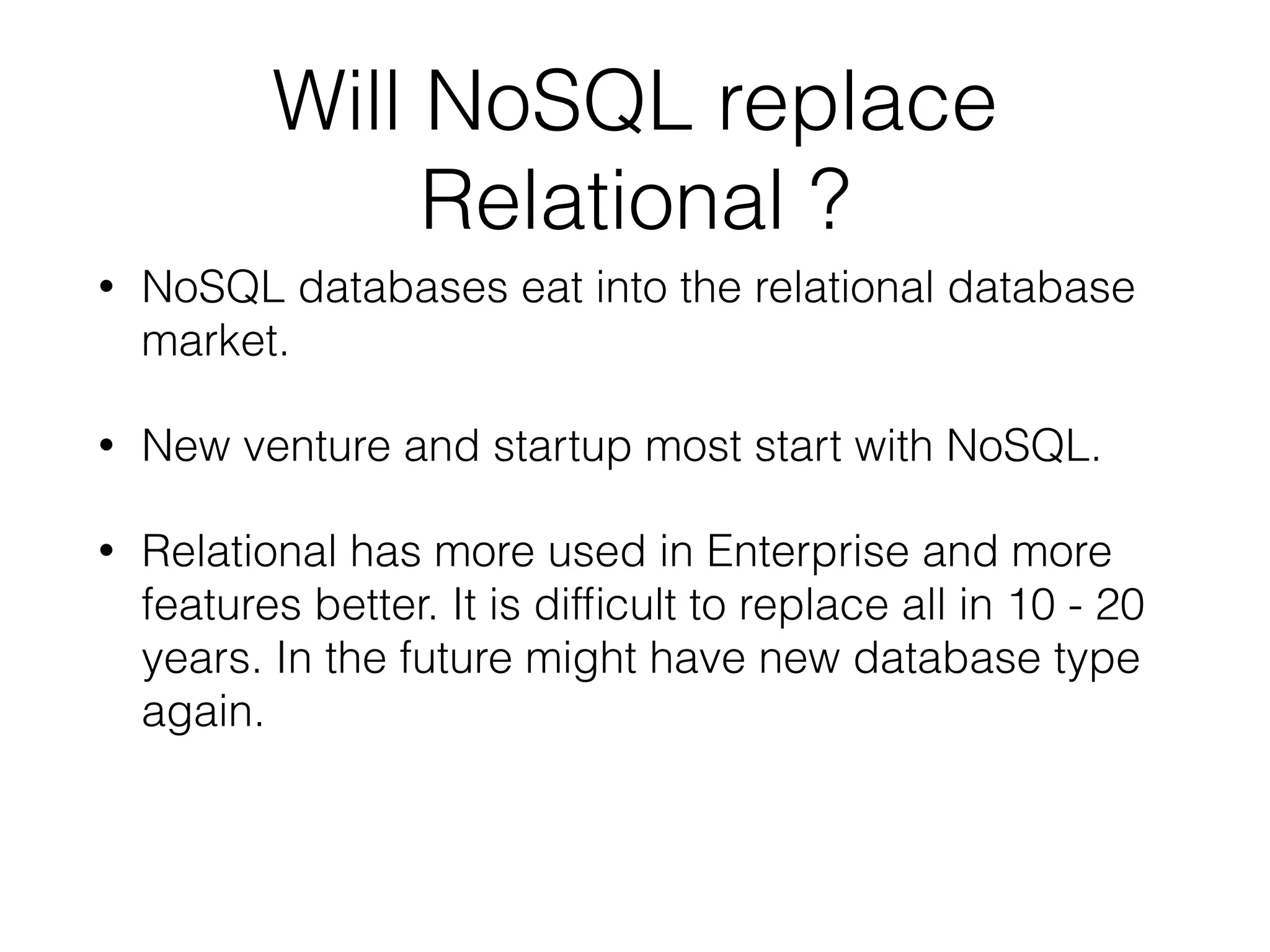
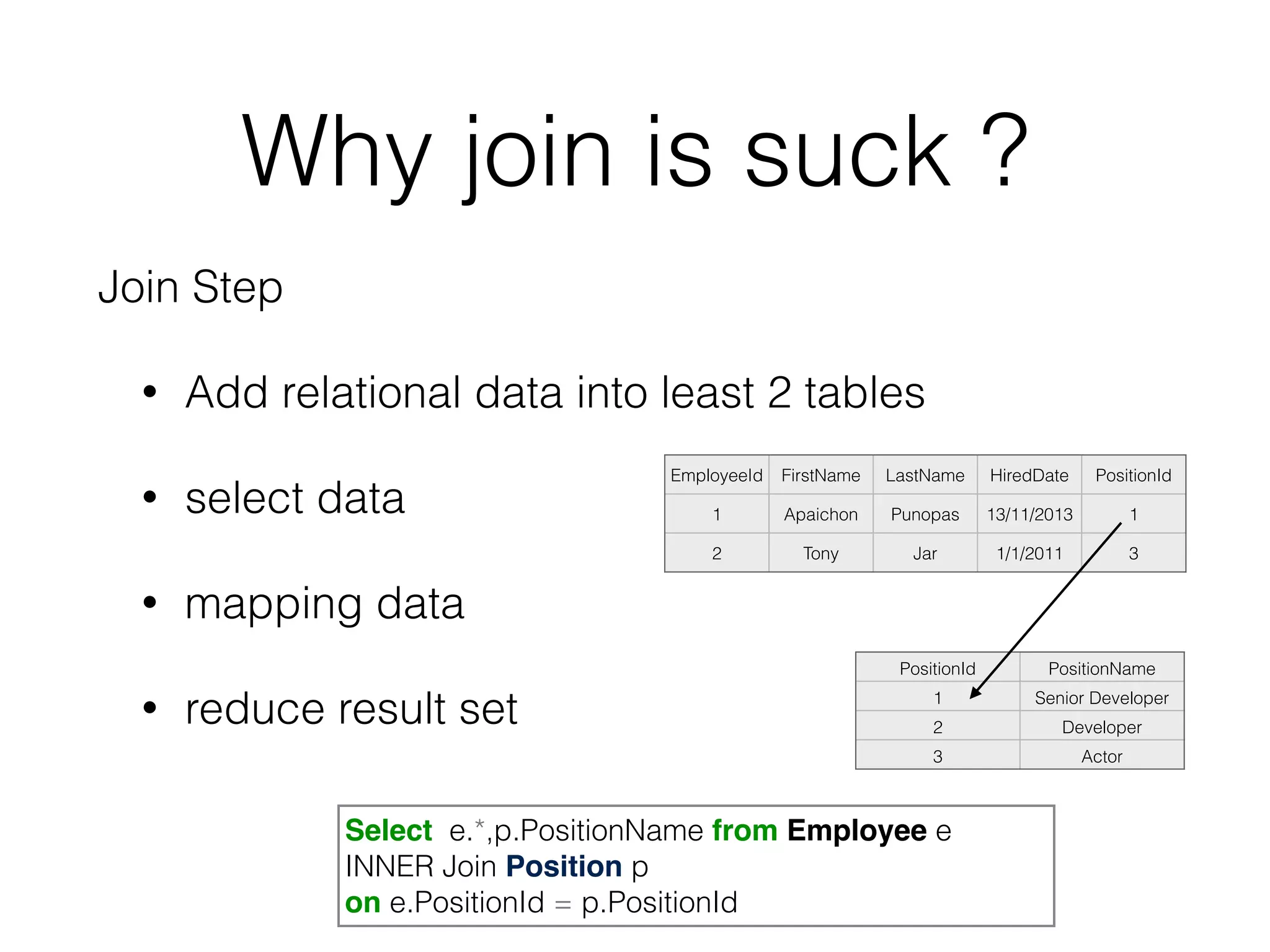
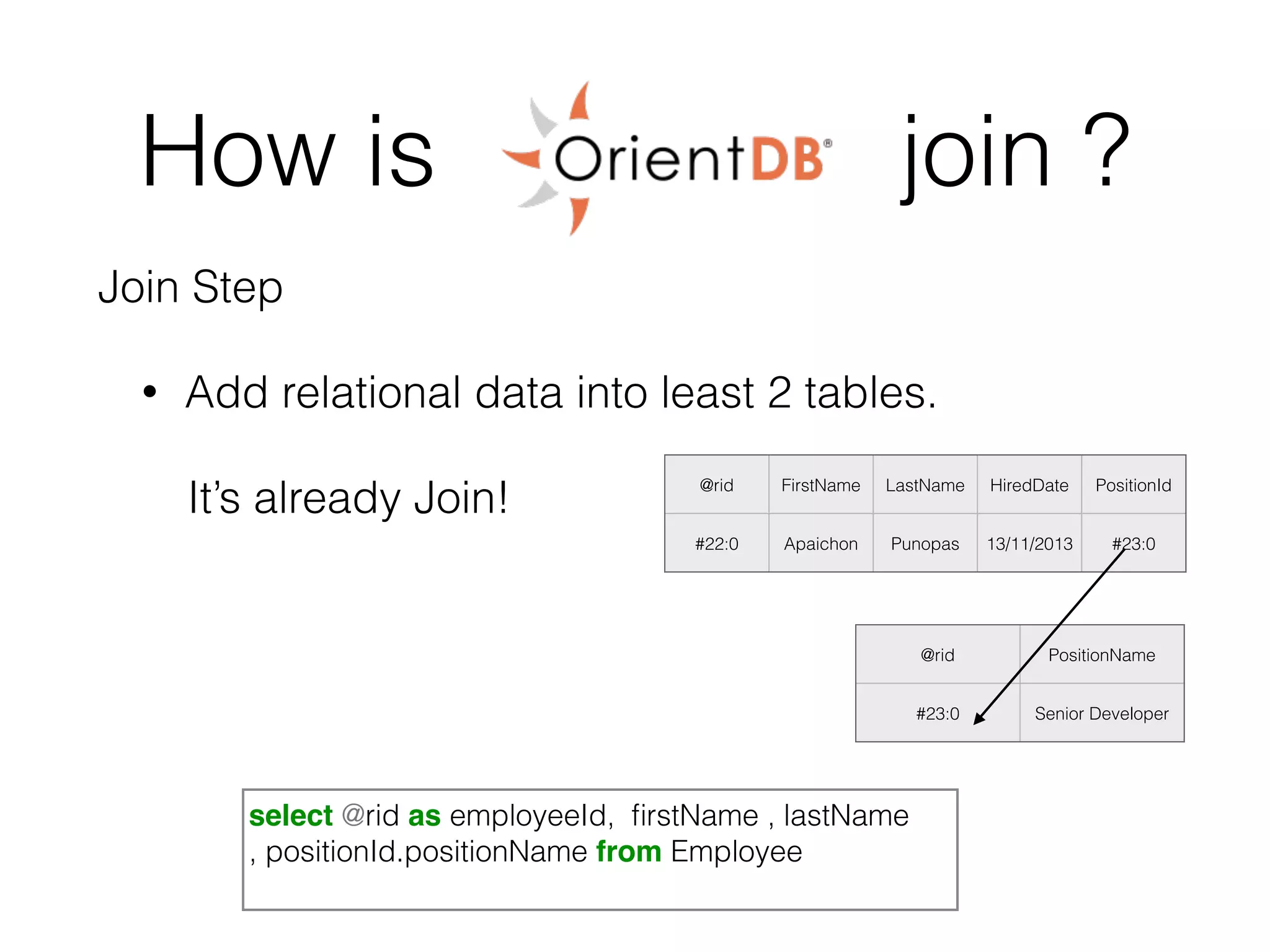
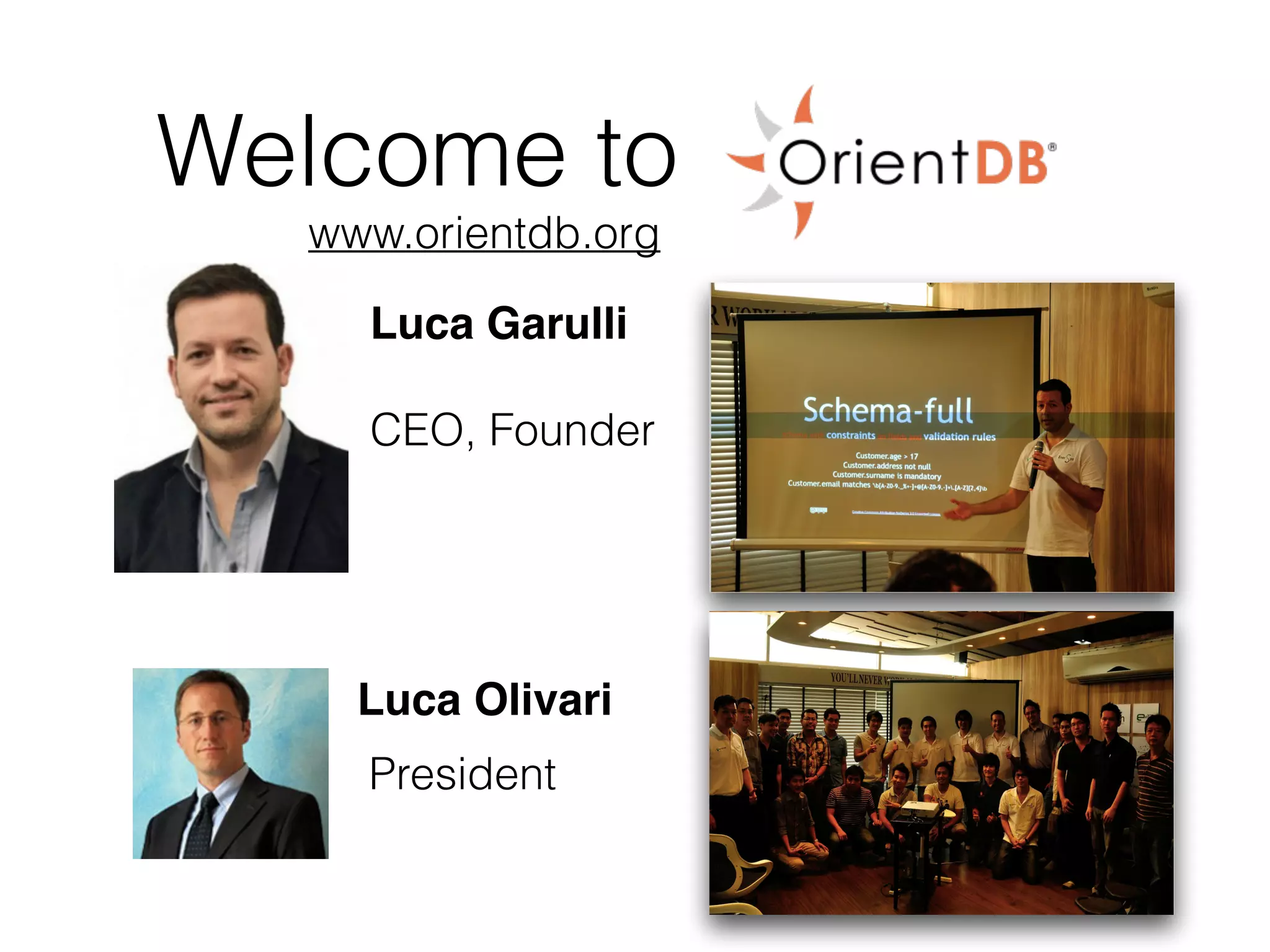
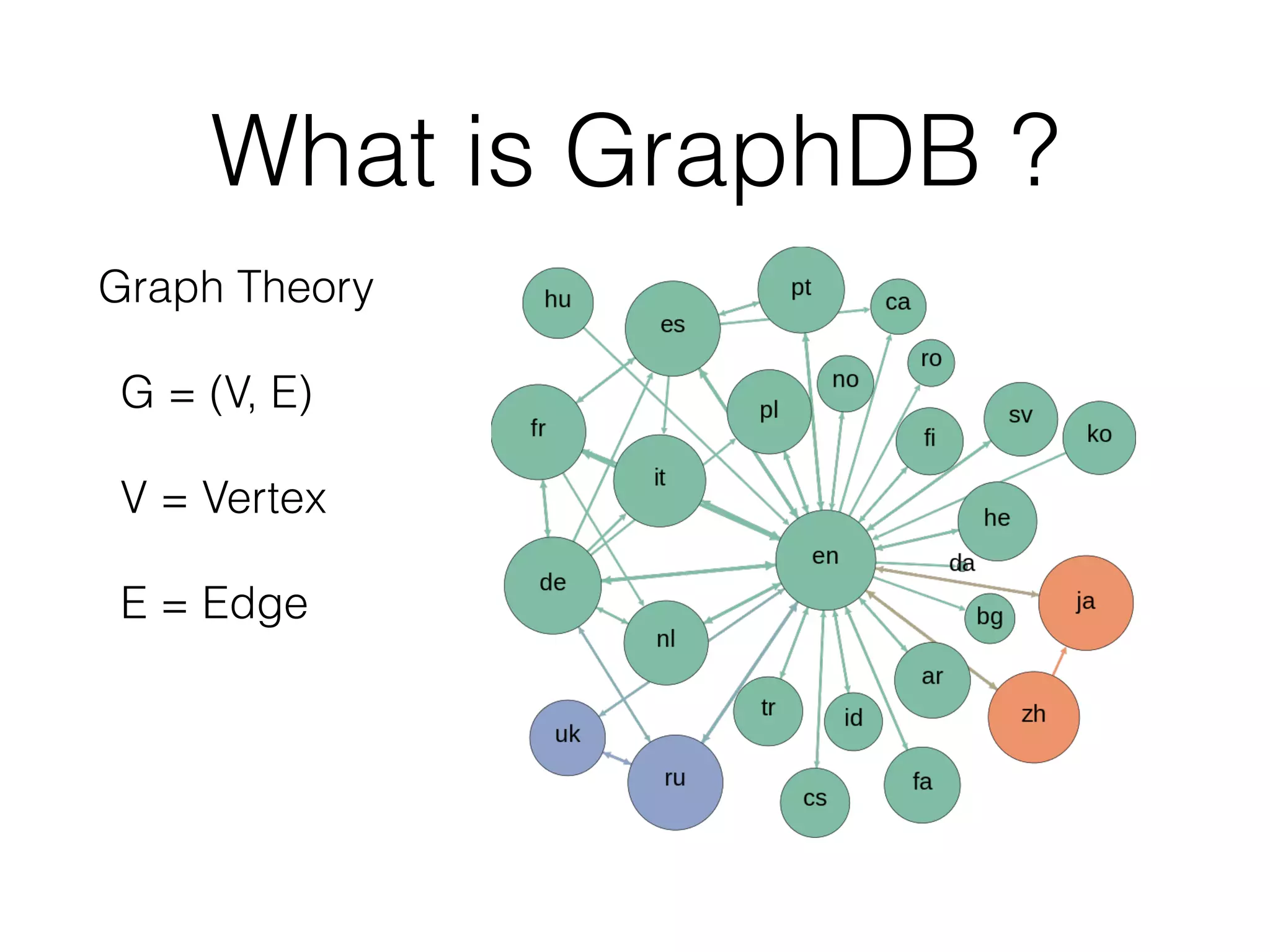
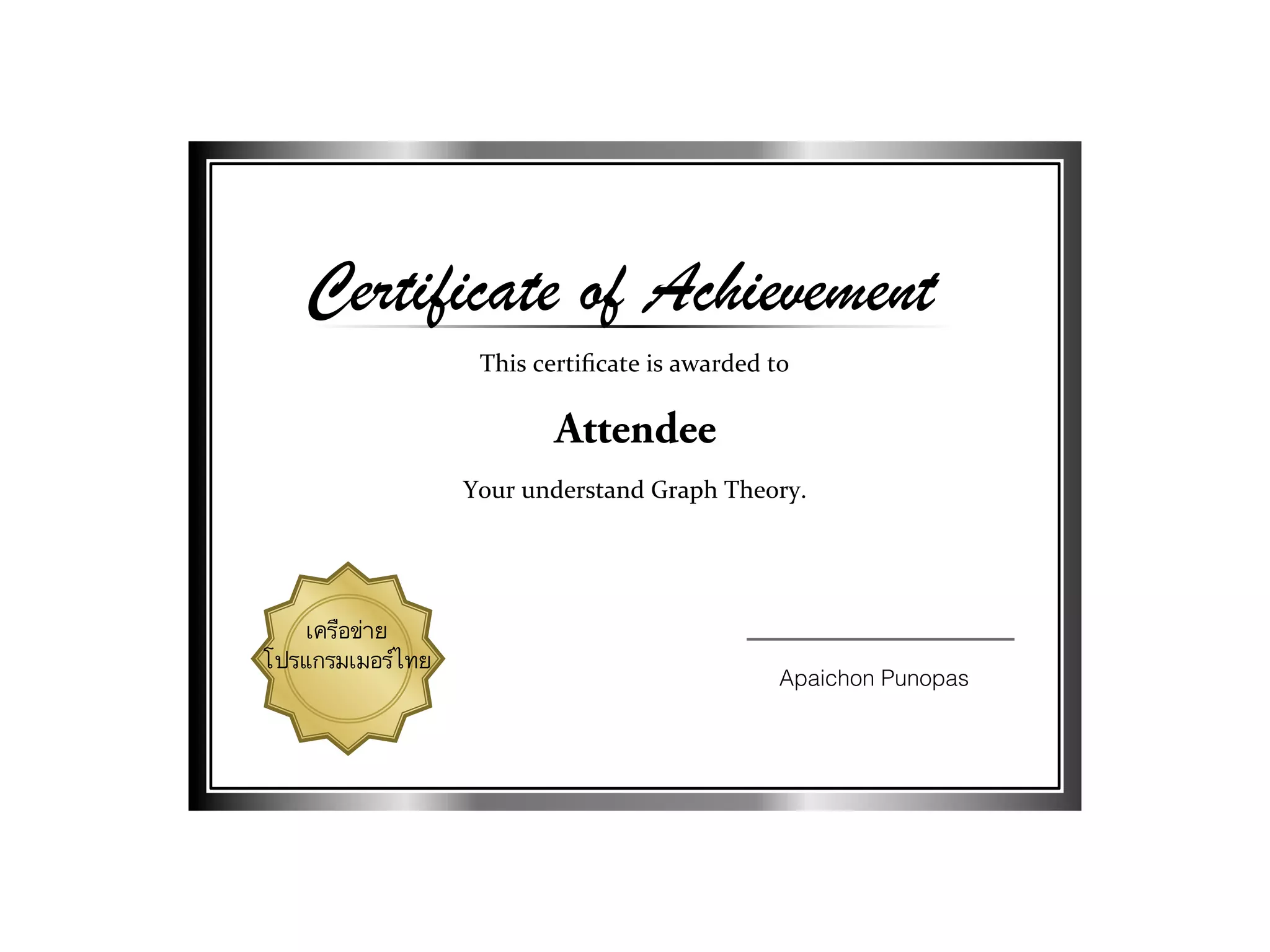
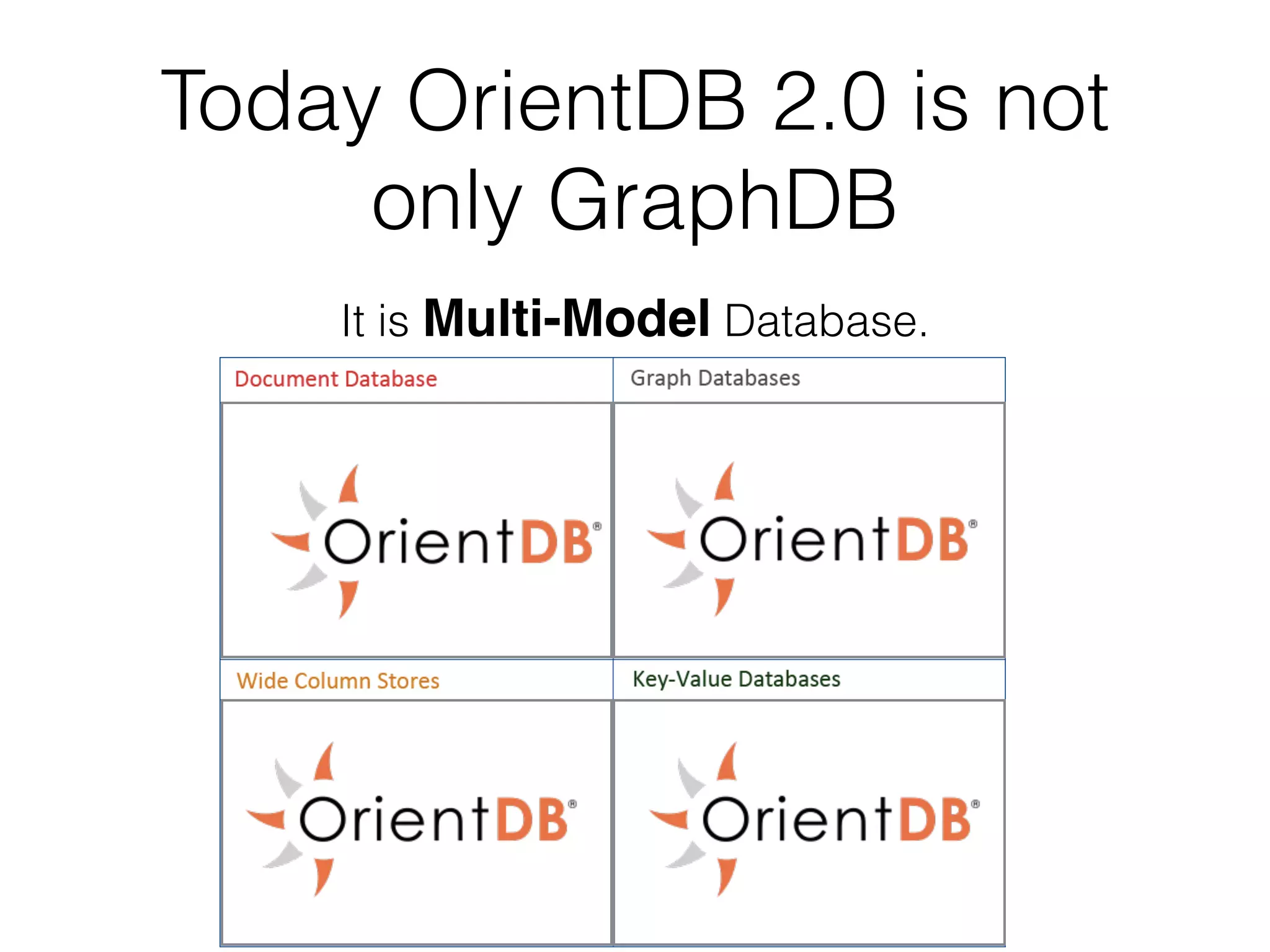
![Document Model
The data in this model is stored inside documents. A document
is a set of key/value pairs (also referred to as fields or properties)
where a key allows access to its value. Values can hold primitive
data types, embedded documents, or arrays of other values.
{firstName:”A",lastName:"LA"
, friends:[{firstName:”A"}
,{firstName:"B"
, lastName: “lB”}]
}](https://image.slidesharecdn.com/export-150317175303-conversion-gate01/75/Change-RelationalDB-to-GraphDB-with-OrientDB-20-2048.jpg)
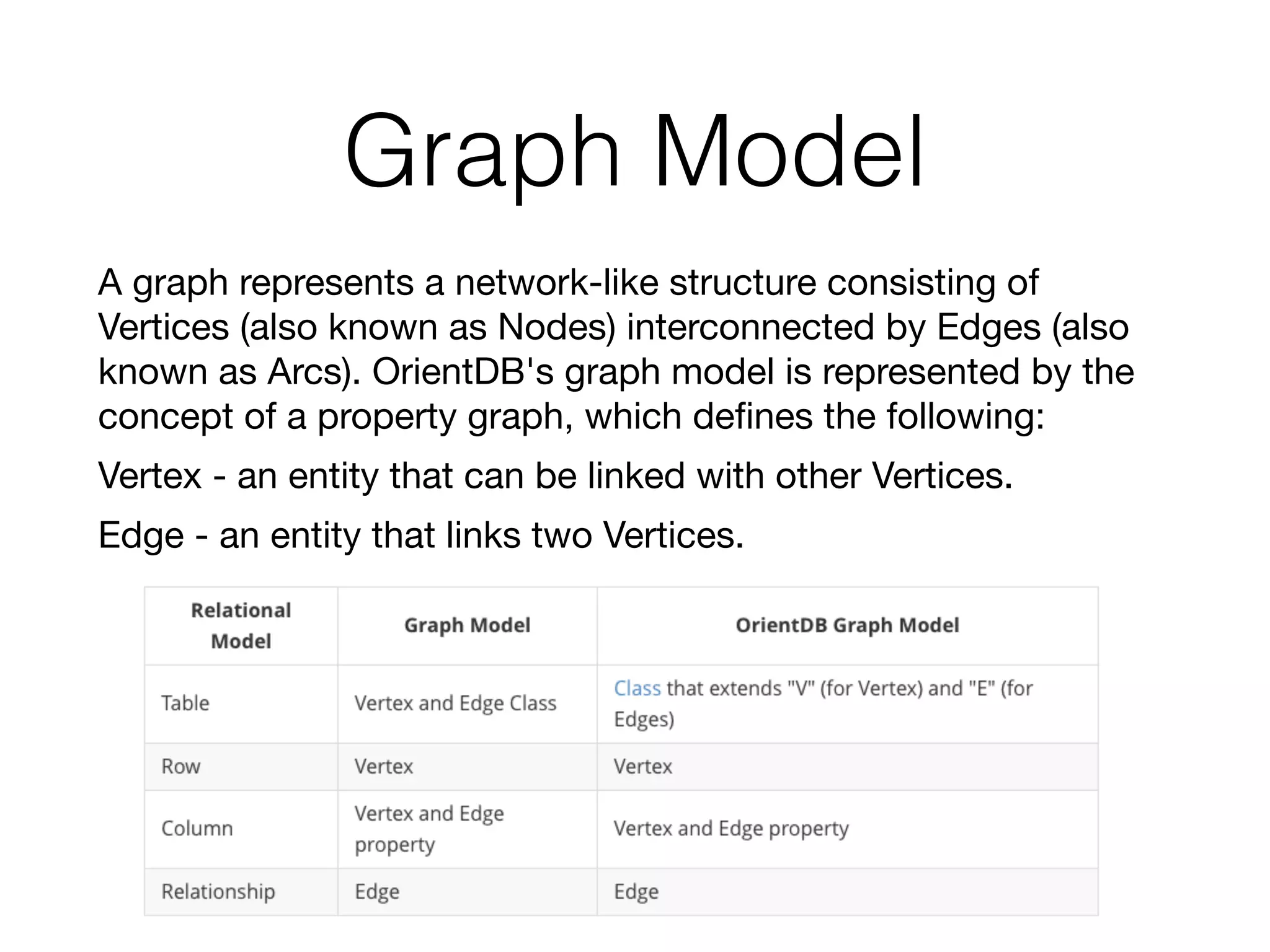
![Support Types
• Popular types same as other database such as
boolean , integer ,double , string , binary , etc
• Embleded -> JSON such as {name:”A” , friends:
[{name:”B” },name:{“C”}]
• Link -> RecordID](https://image.slidesharecdn.com/export-150317175303-conversion-gate01/75/Change-RelationalDB-to-GraphDB-with-OrientDB-22-2048.jpg)
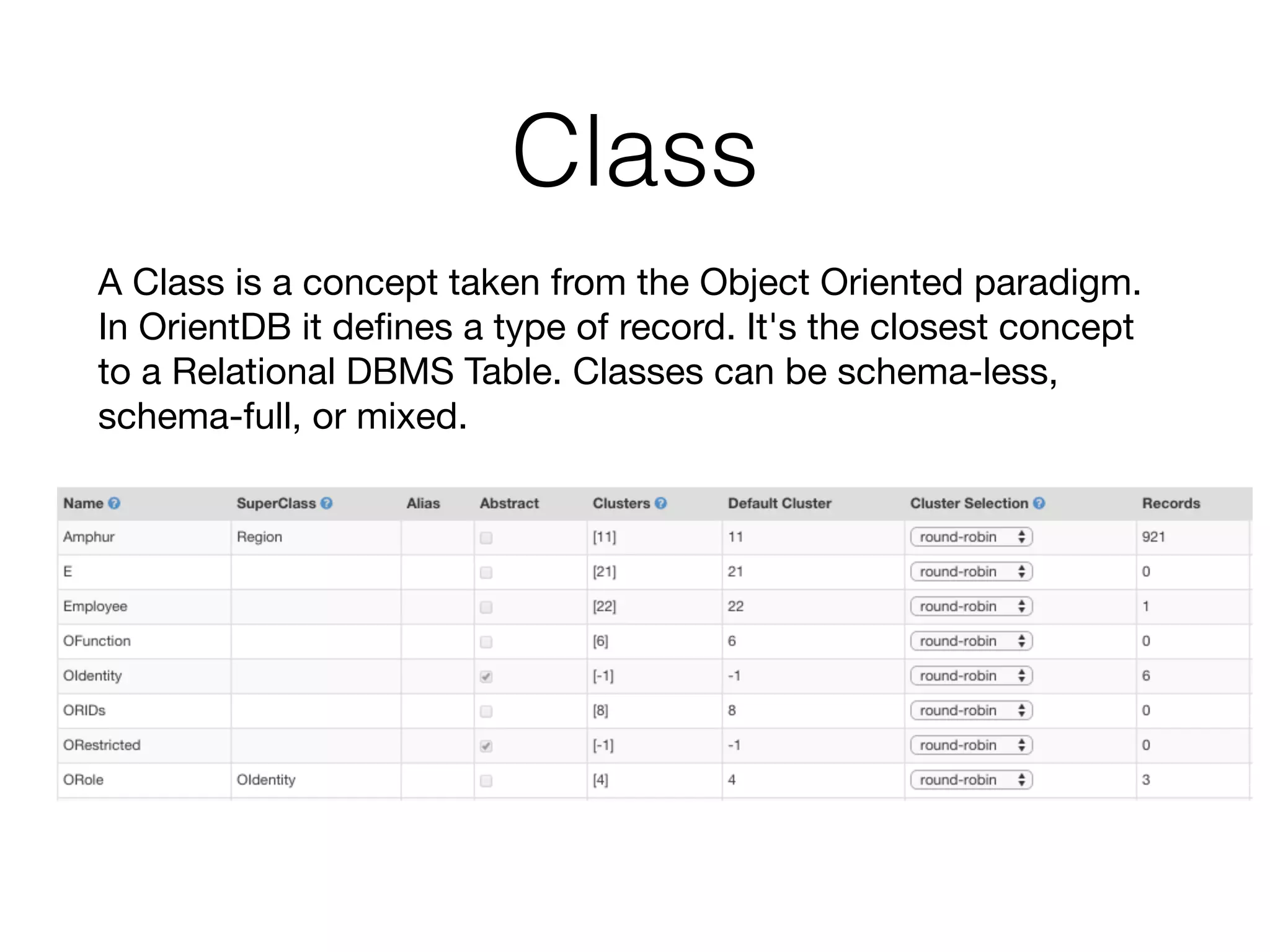
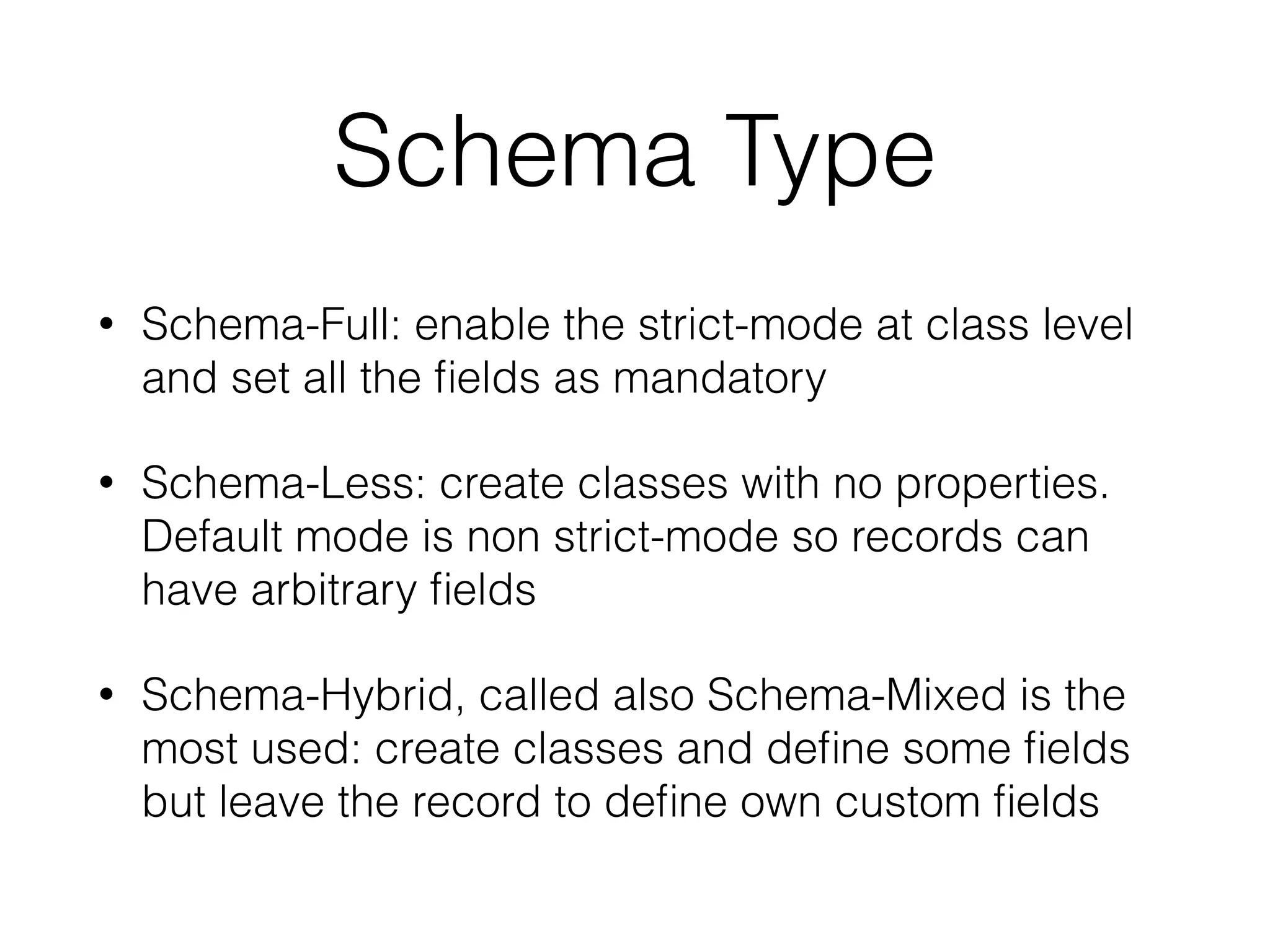
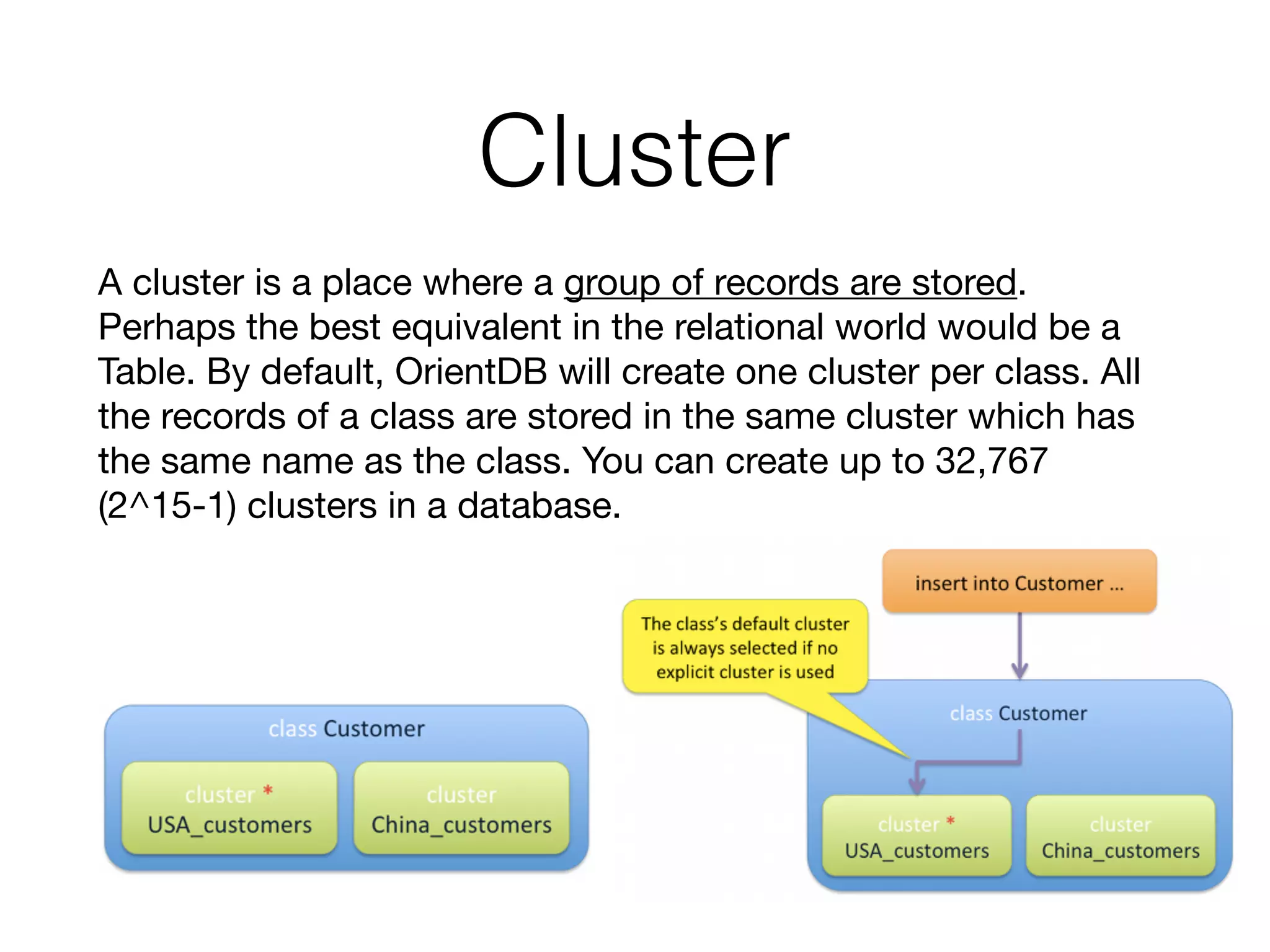

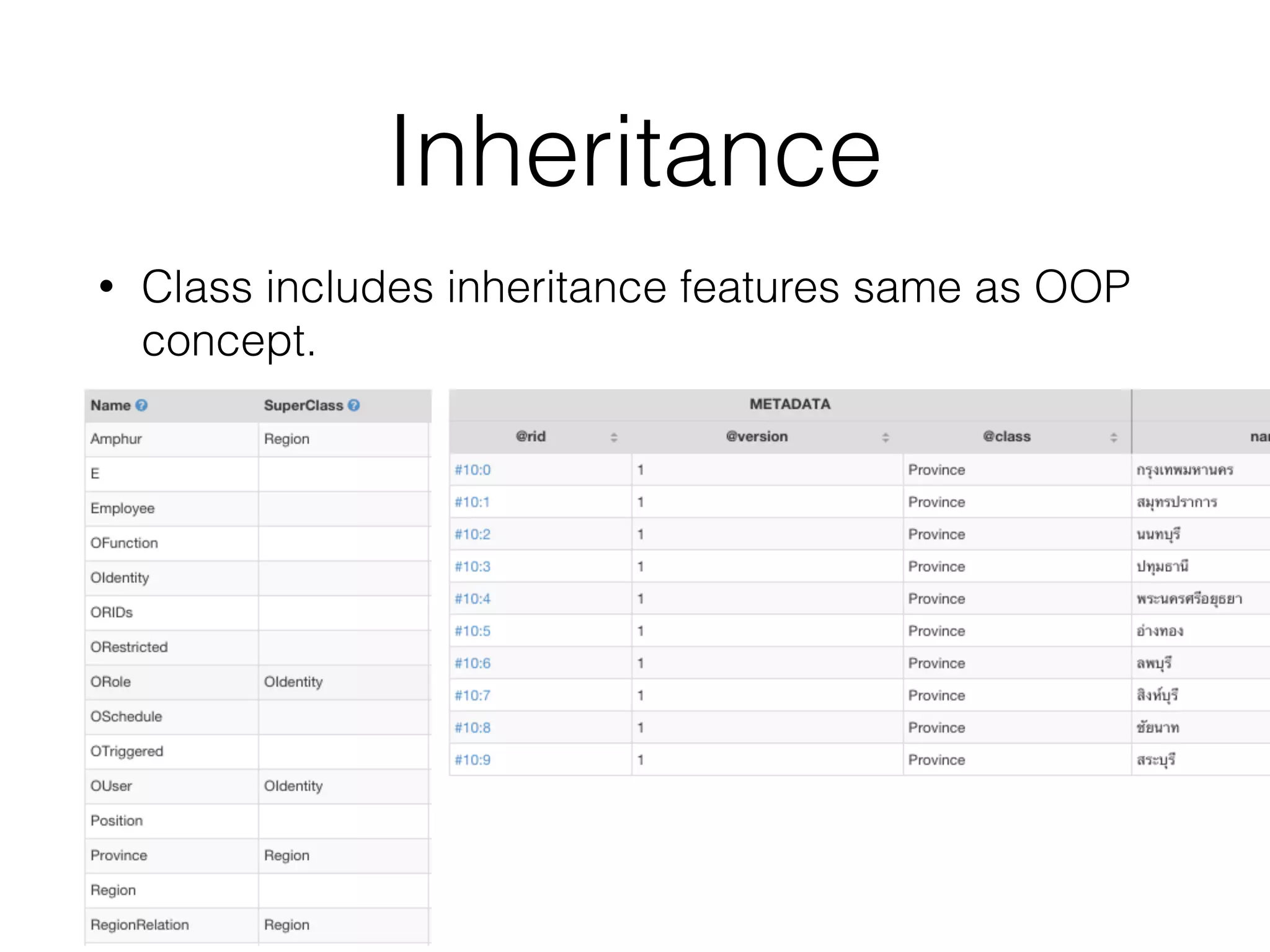
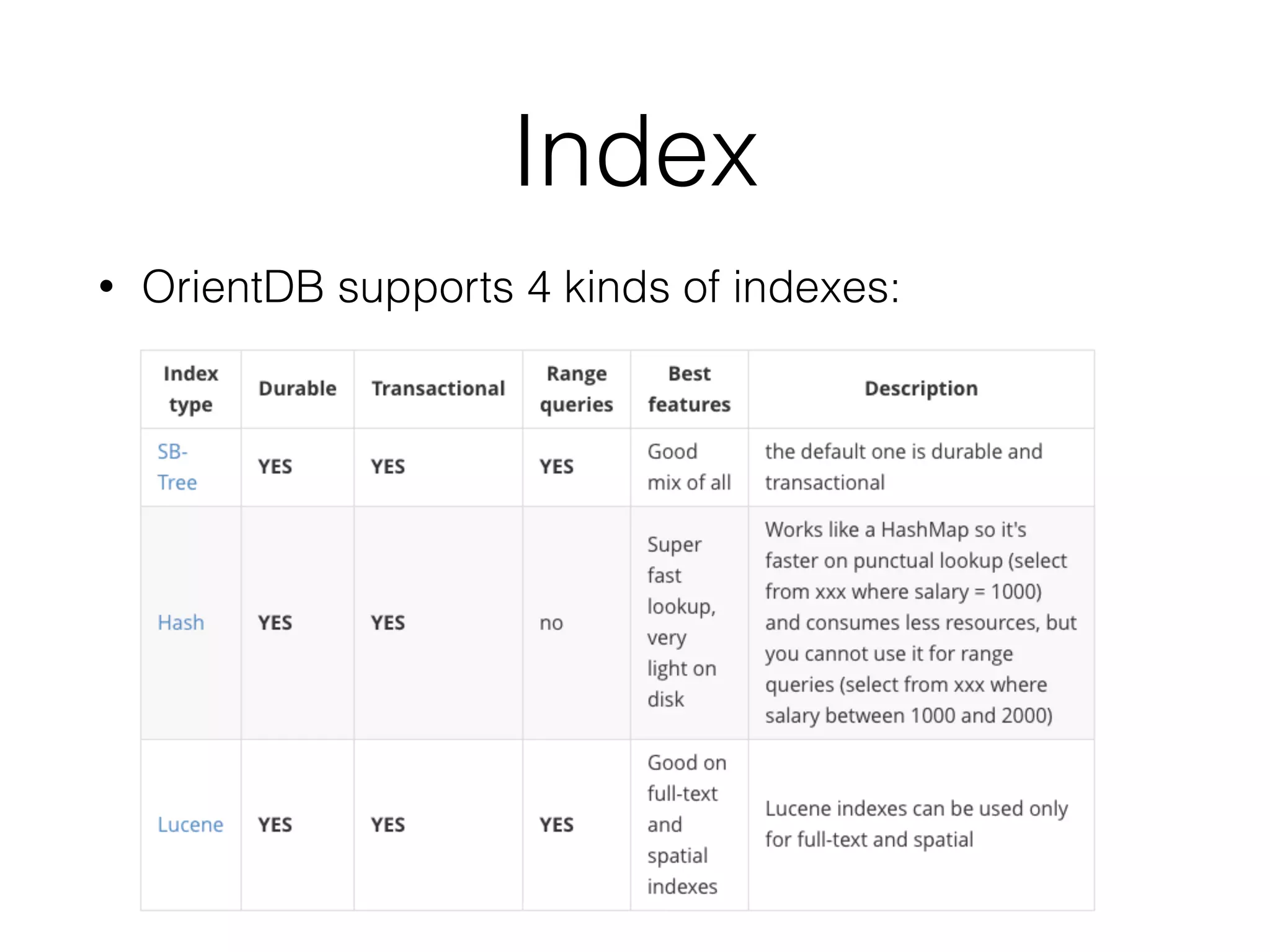
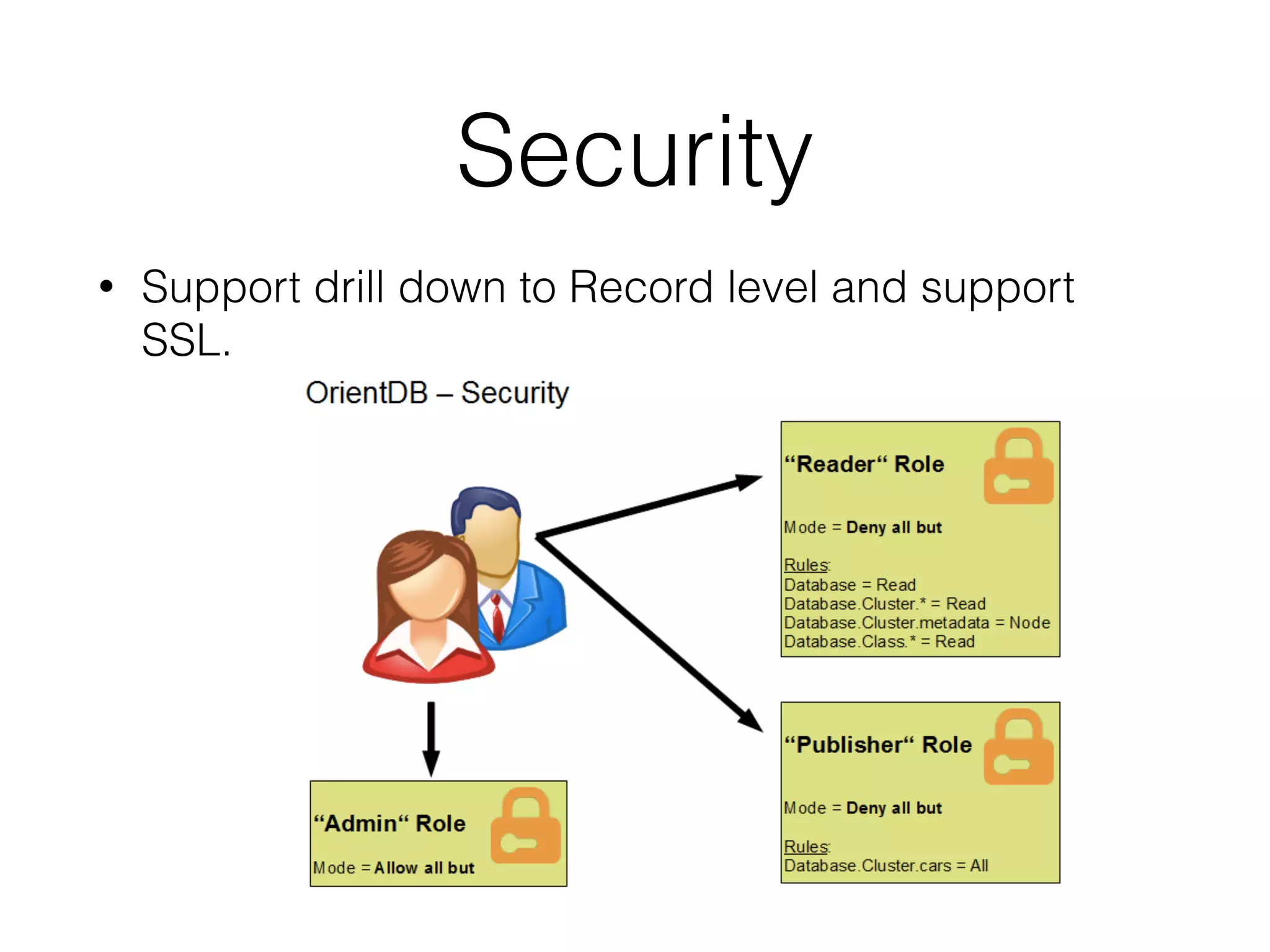
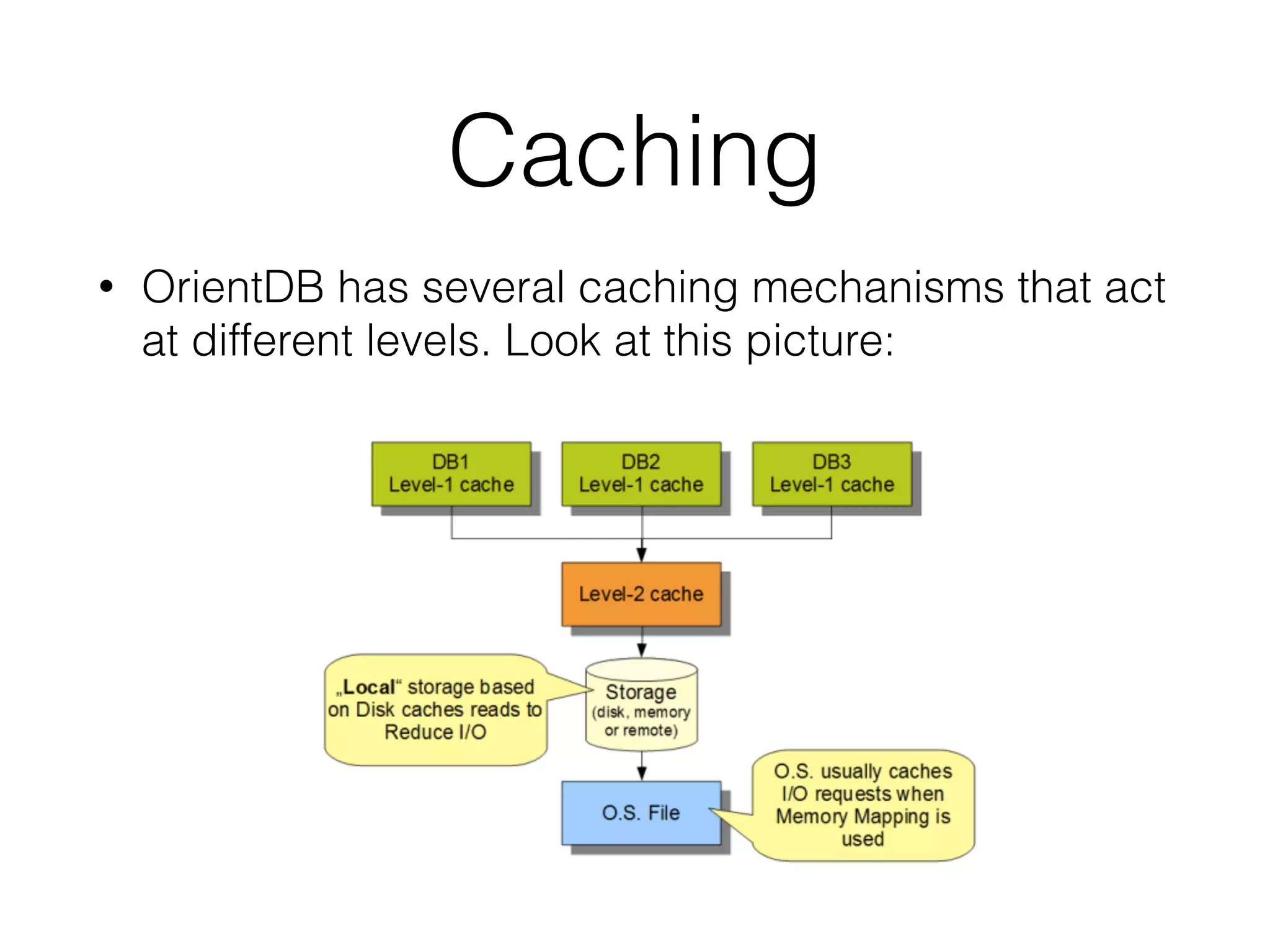
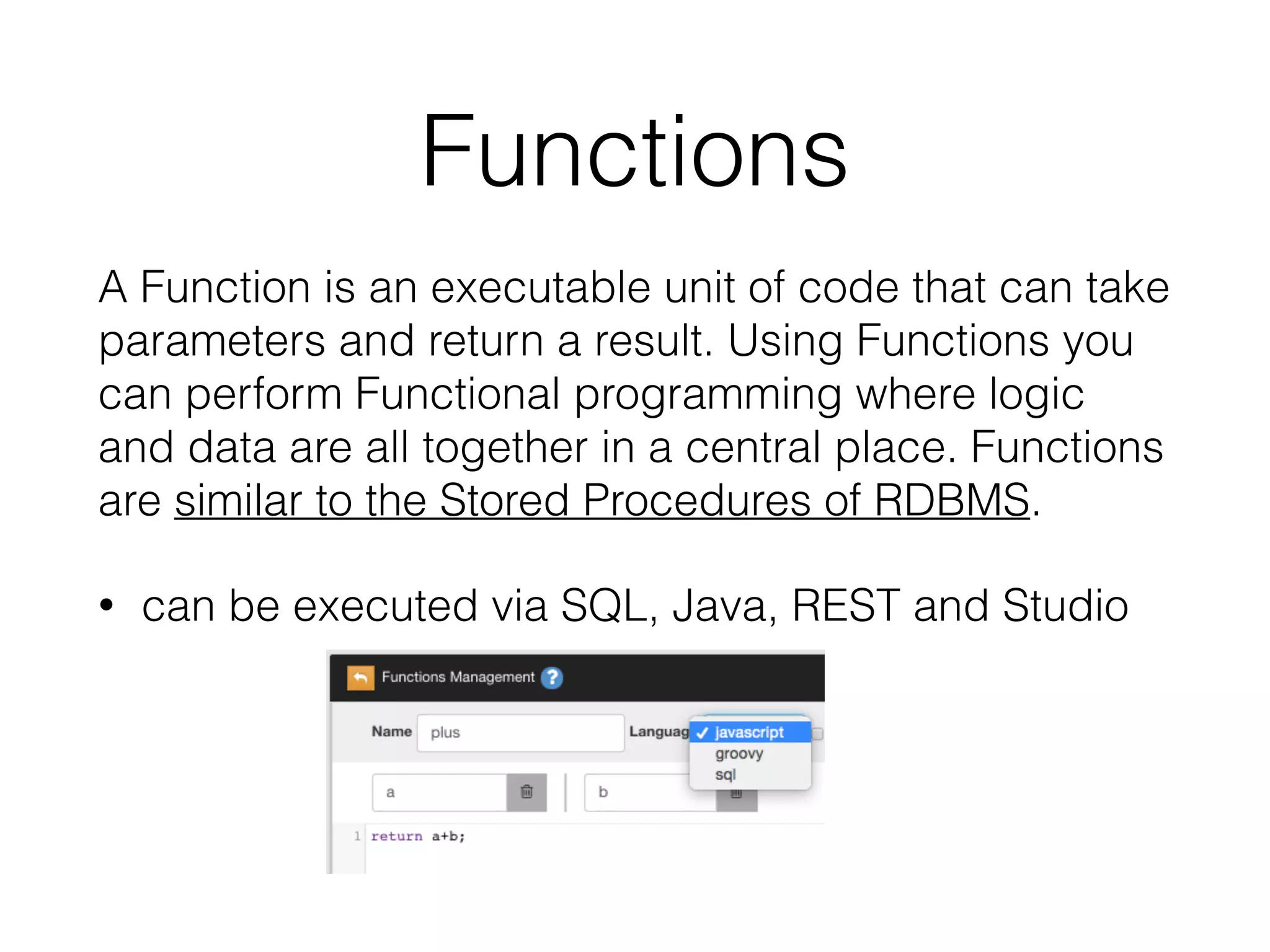
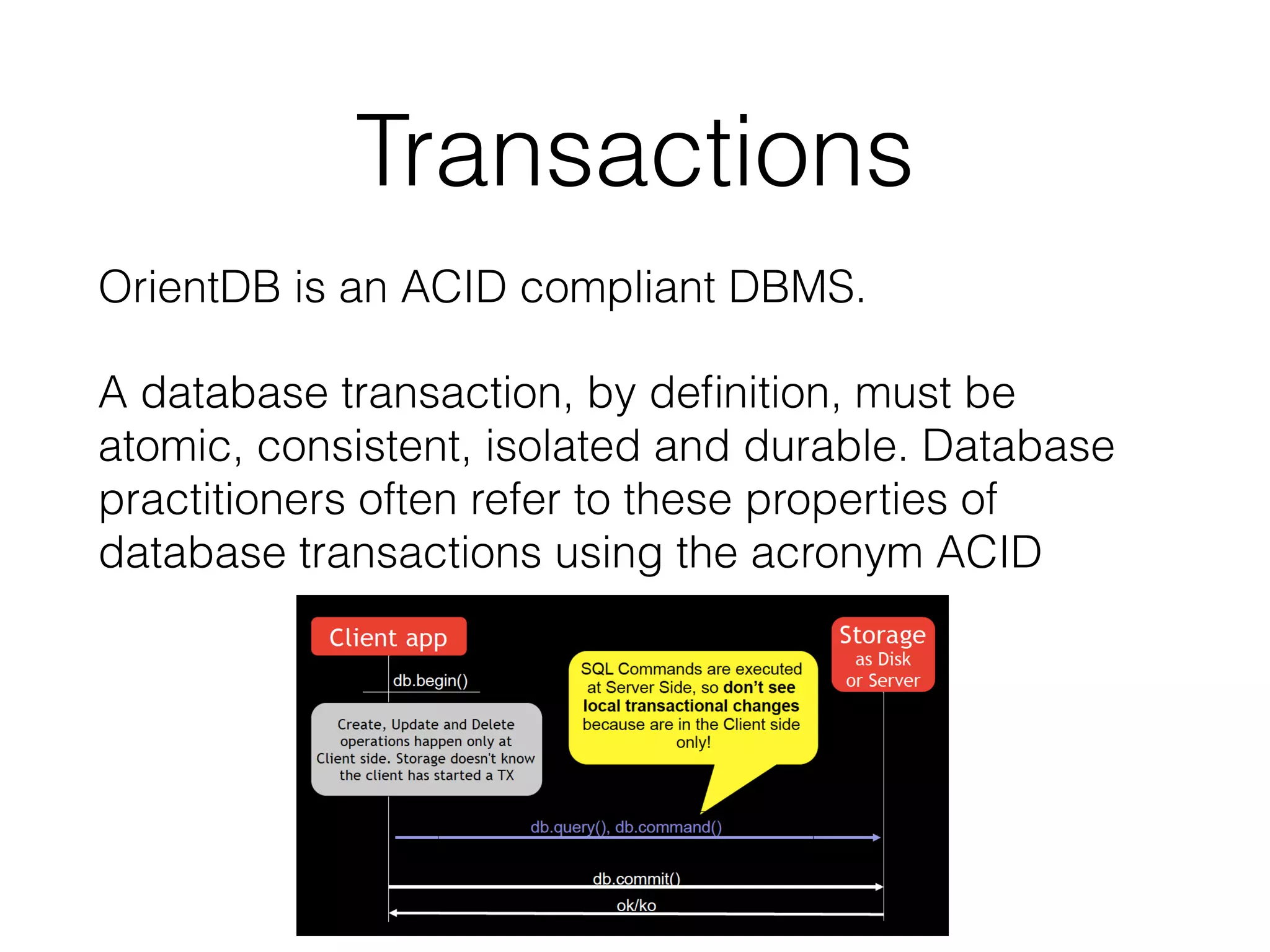
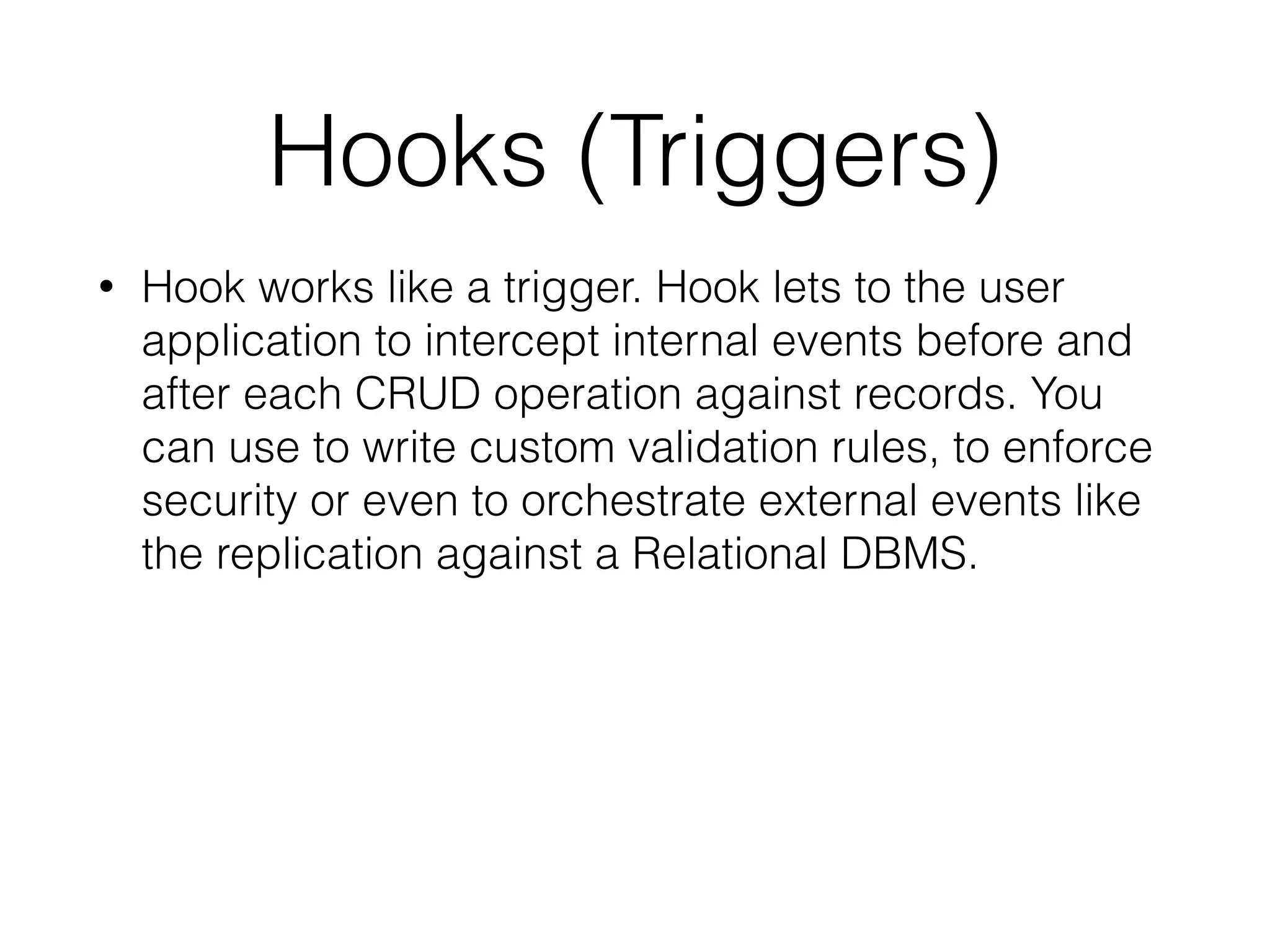


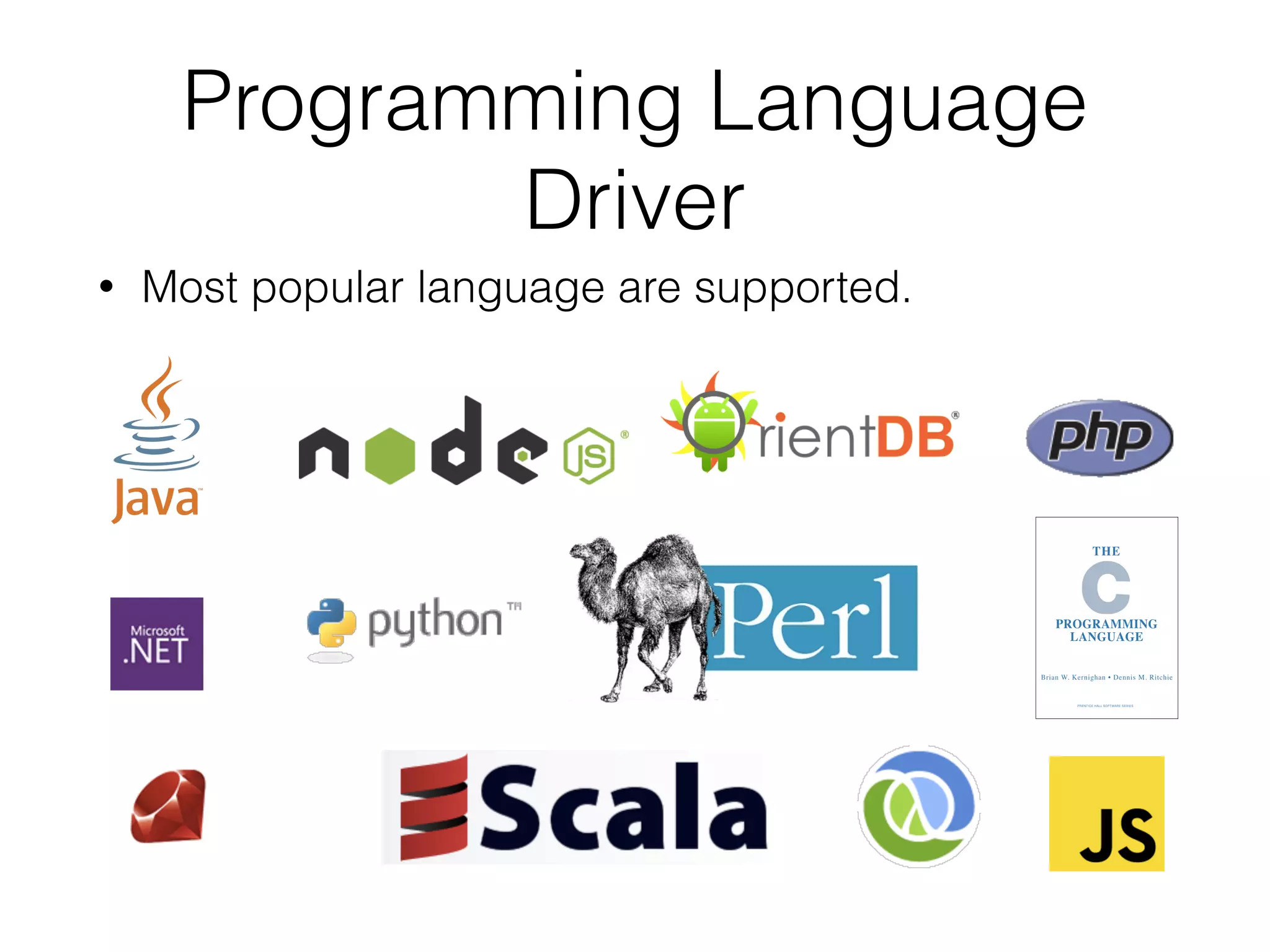
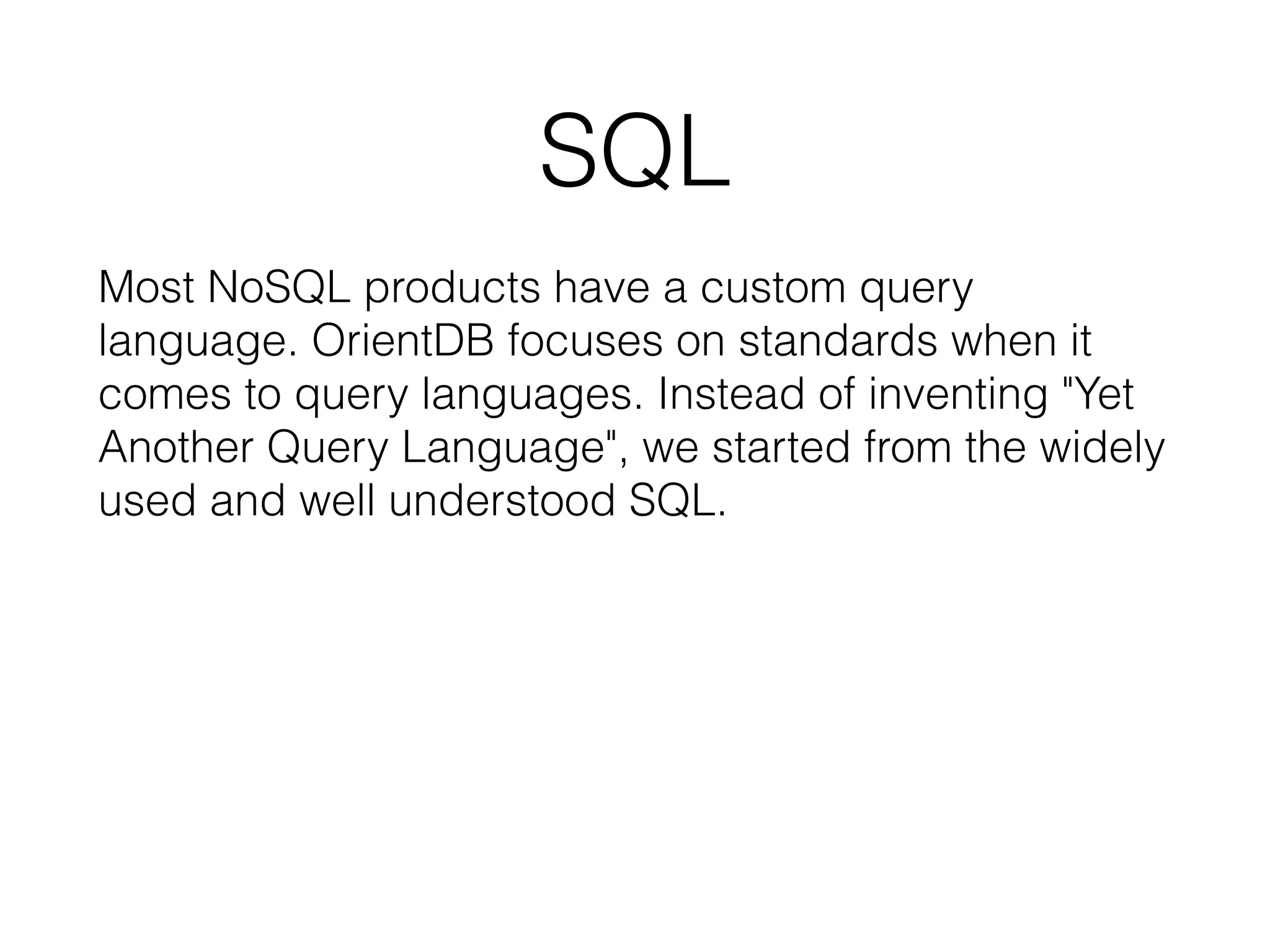
![SQL - Select
• select from OUser
• select from #10:3
• select from [#10:1, #10:3, #10:5]
• select from OUser where name like 'l%'
• select sum(salary) from Employee where age < 40
group by job
• select from Employee where any() like ‘Apa%'
• select from china:Customers](https://image.slidesharecdn.com/export-150317175303-conversion-gate01/75/Change-RelationalDB-to-GraphDB-with-OrientDB-38-2048.jpg)
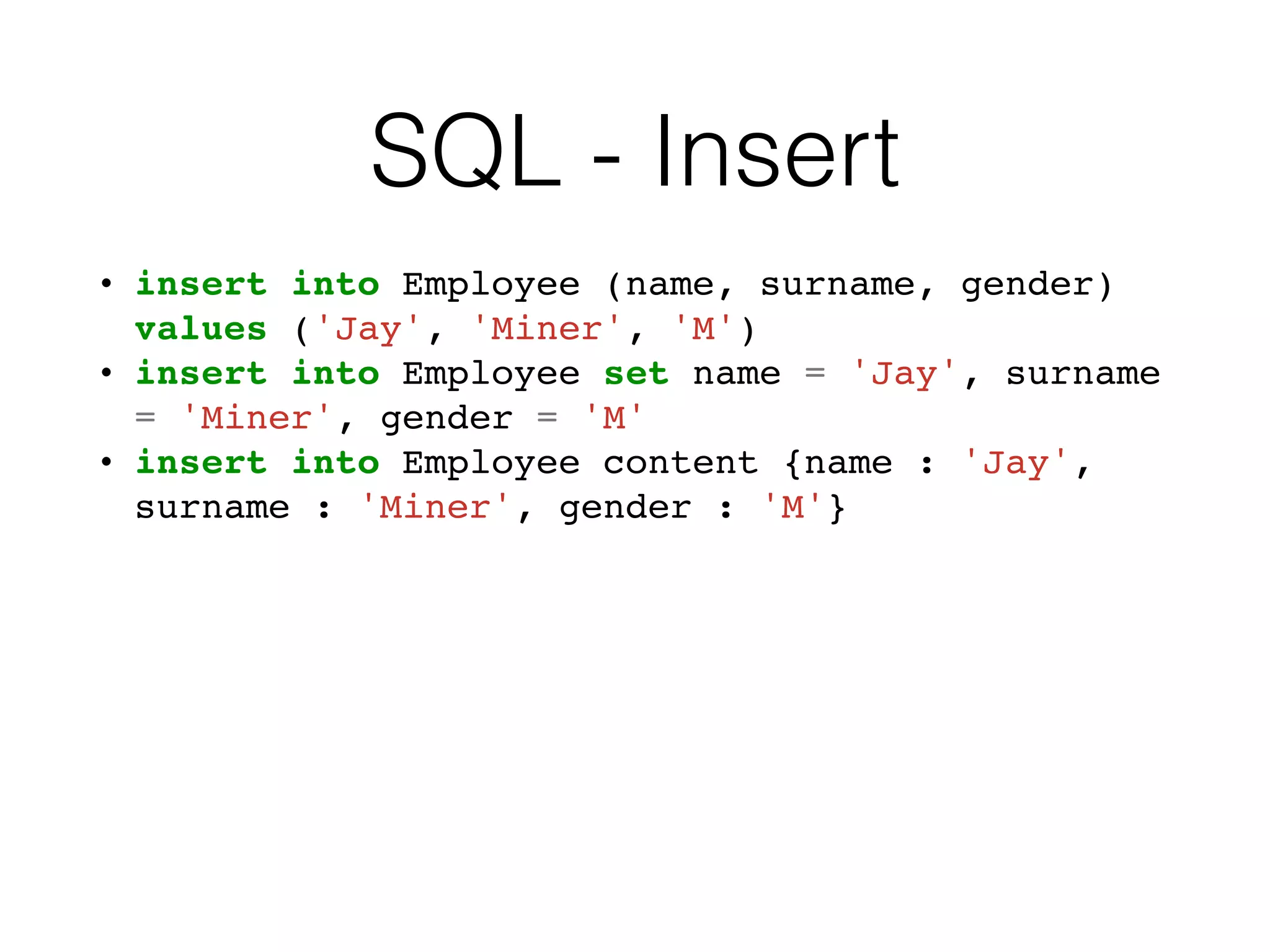
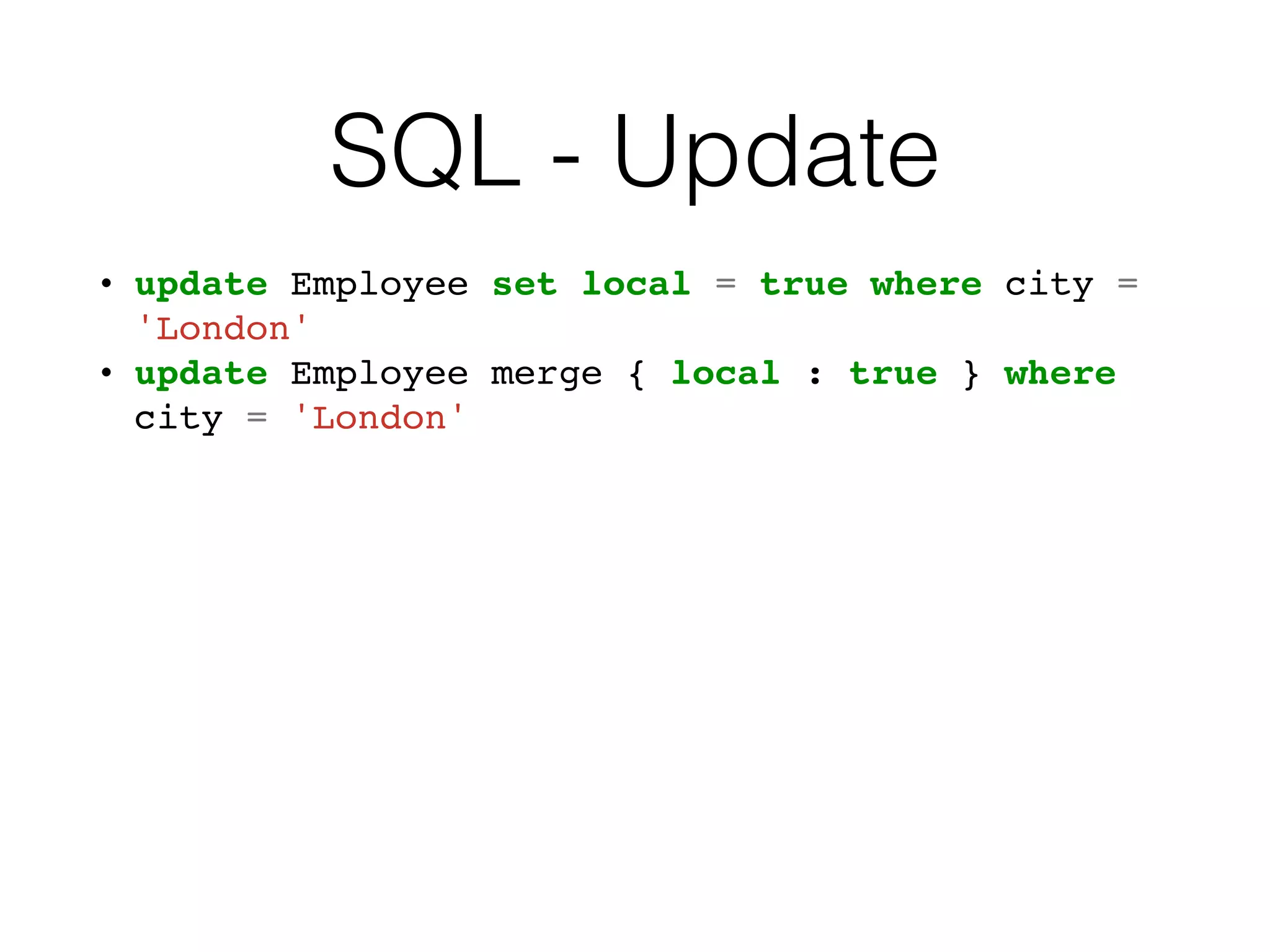
![Delete
•delete from Employee where city <> 'London'
•delete from [#24:0,#24:1,#24:2]](https://image.slidesharecdn.com/export-150317175303-conversion-gate01/75/Change-RelationalDB-to-GraphDB-with-OrientDB-41-2048.jpg)
